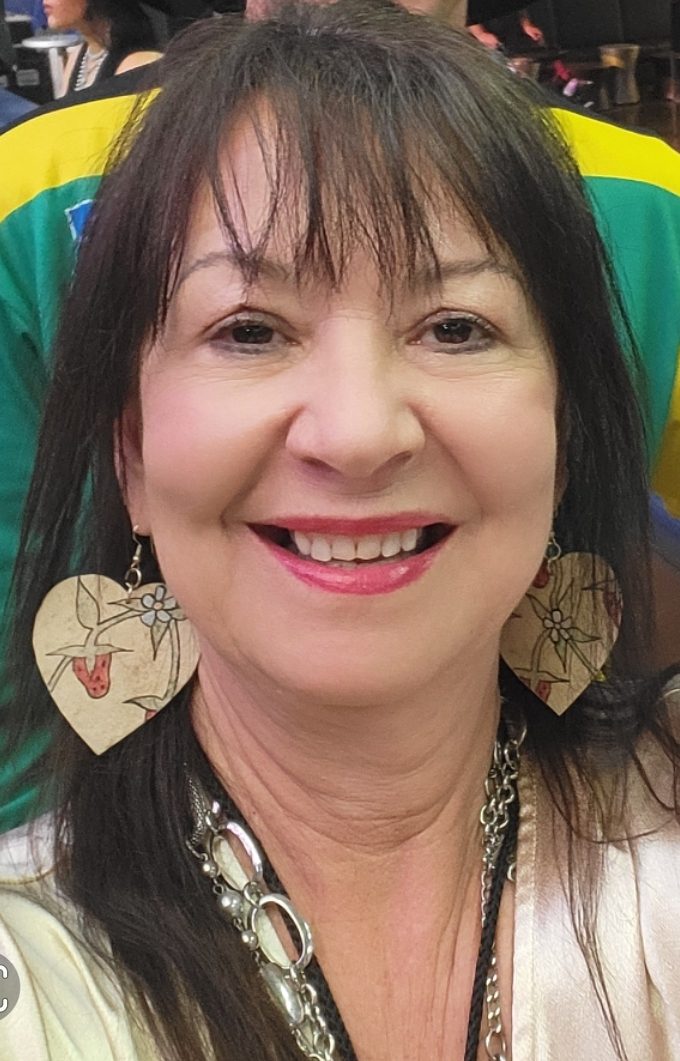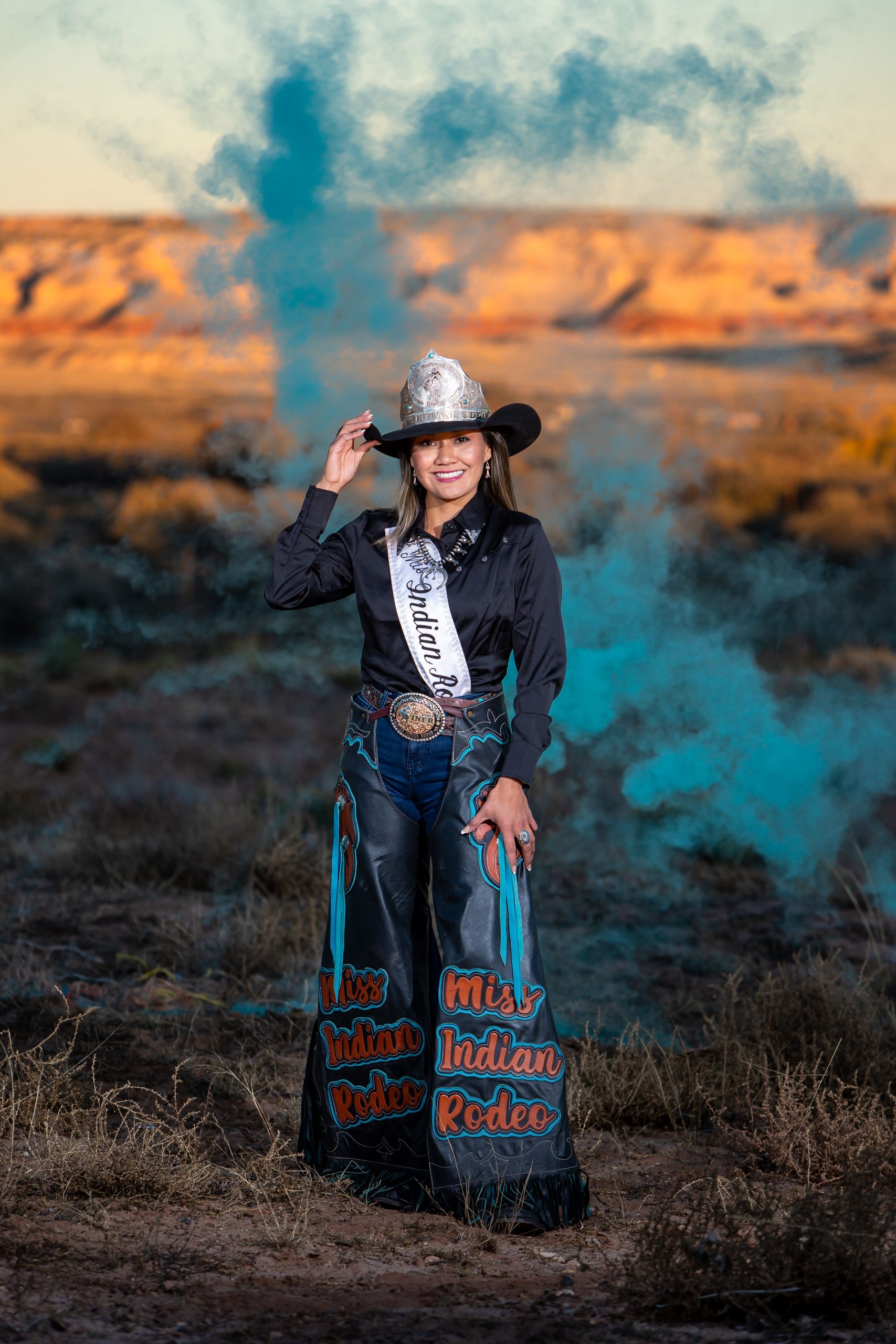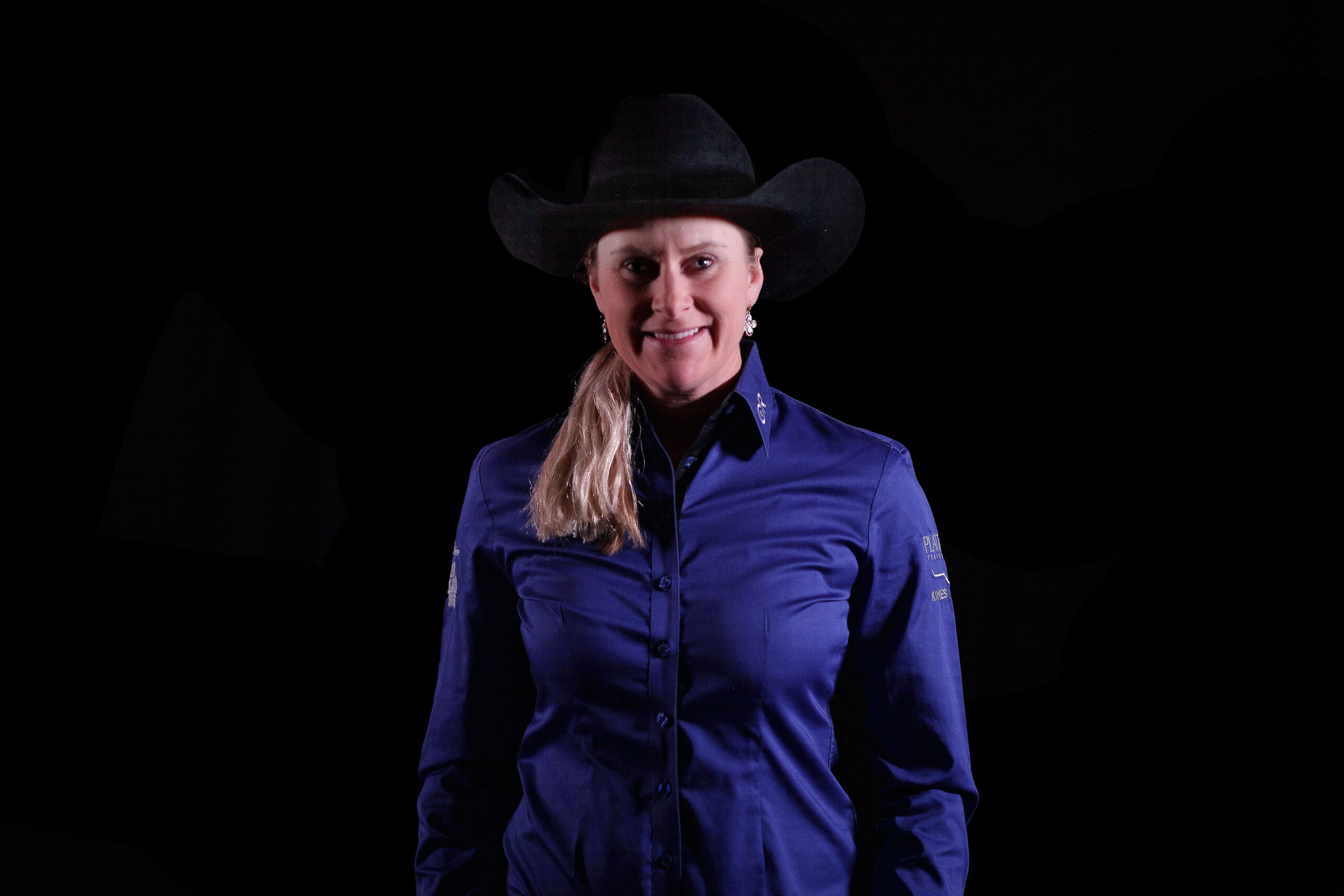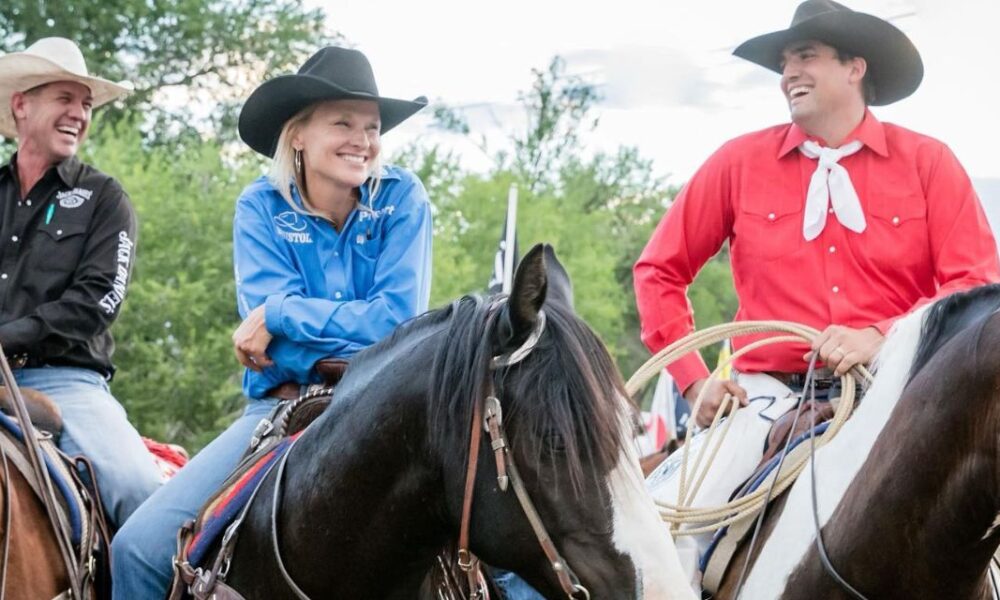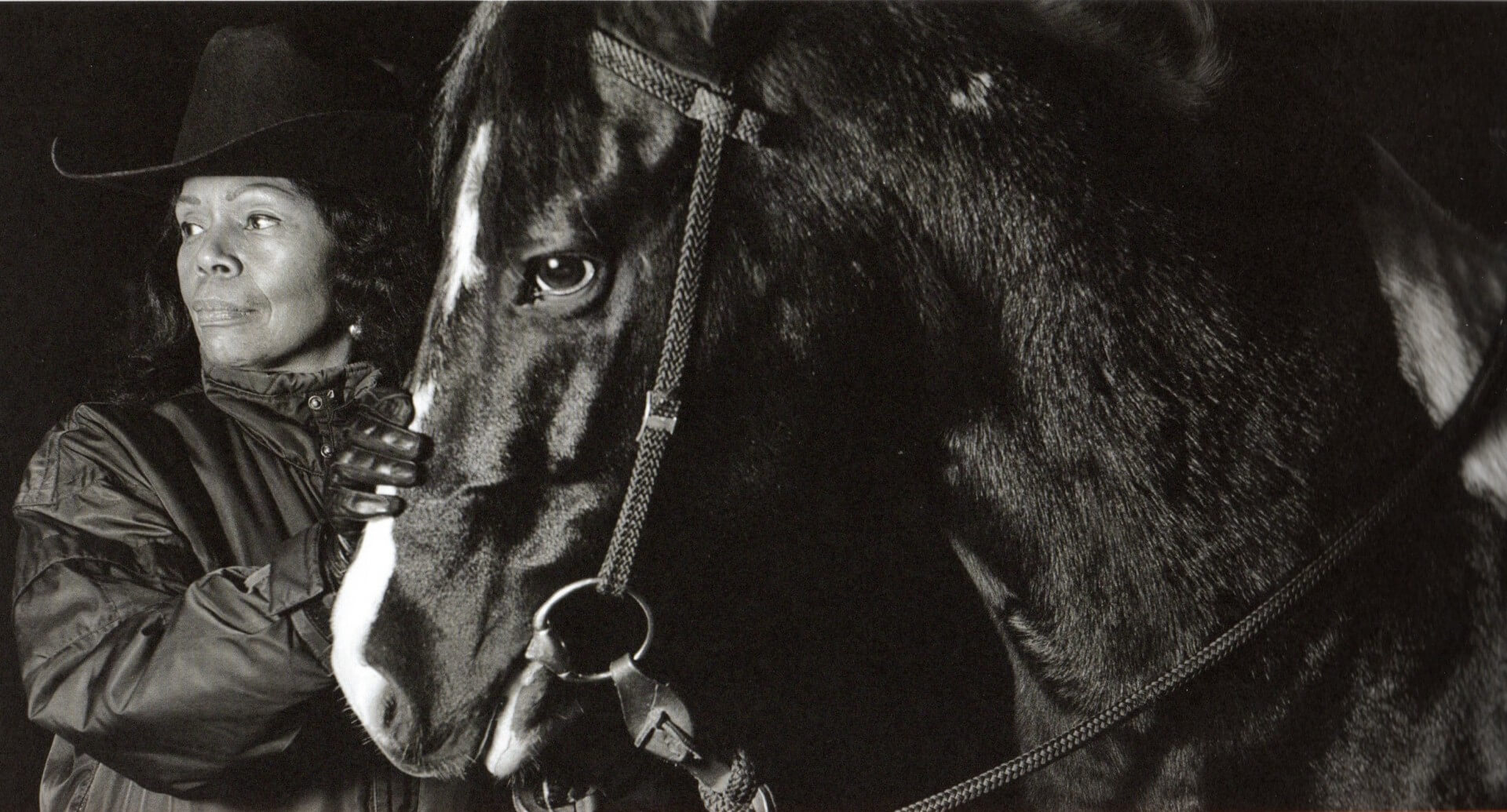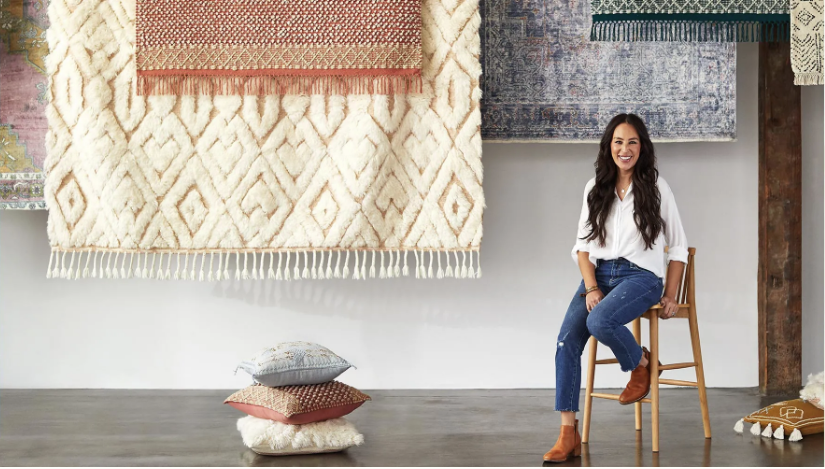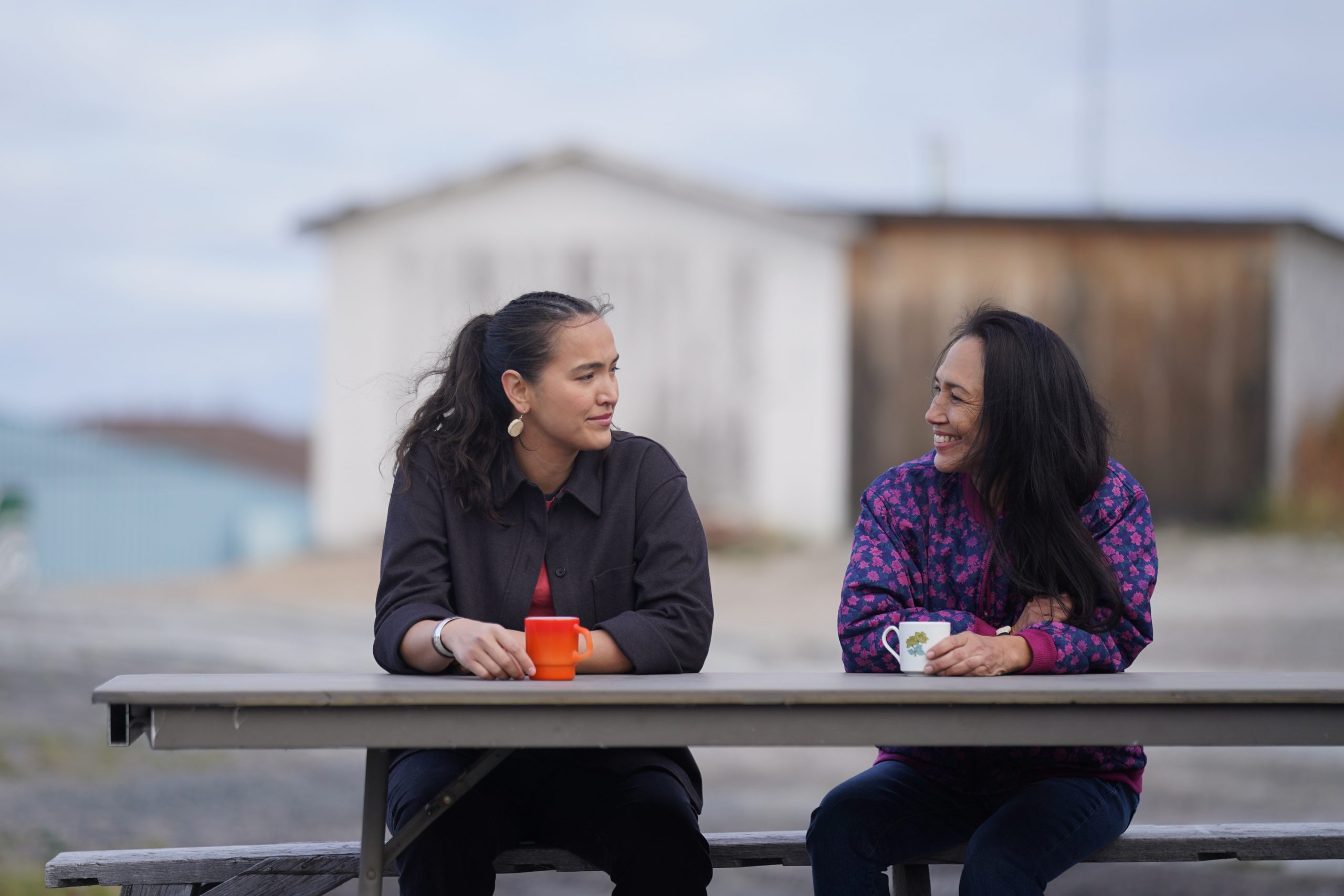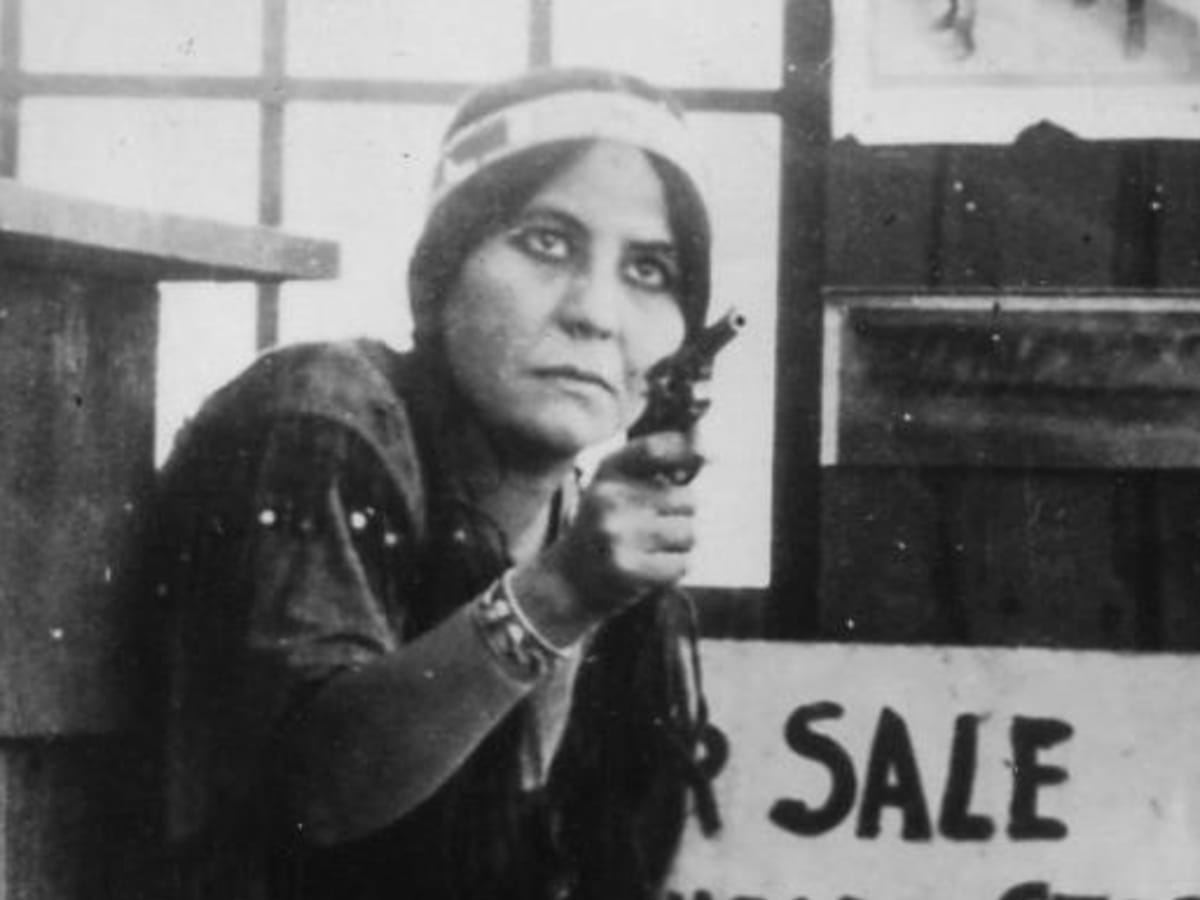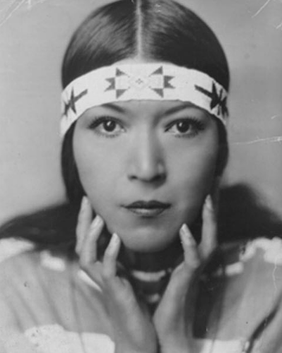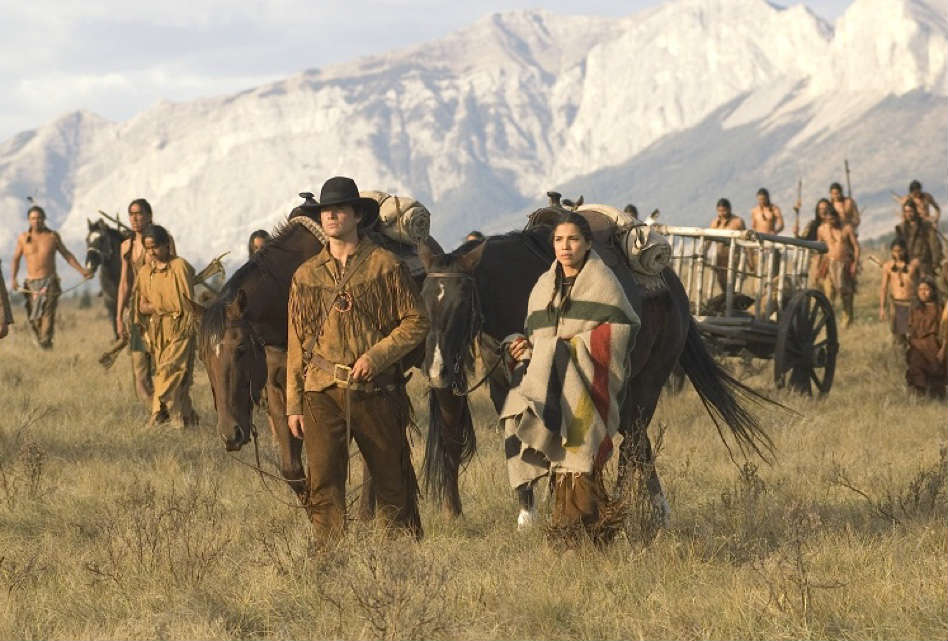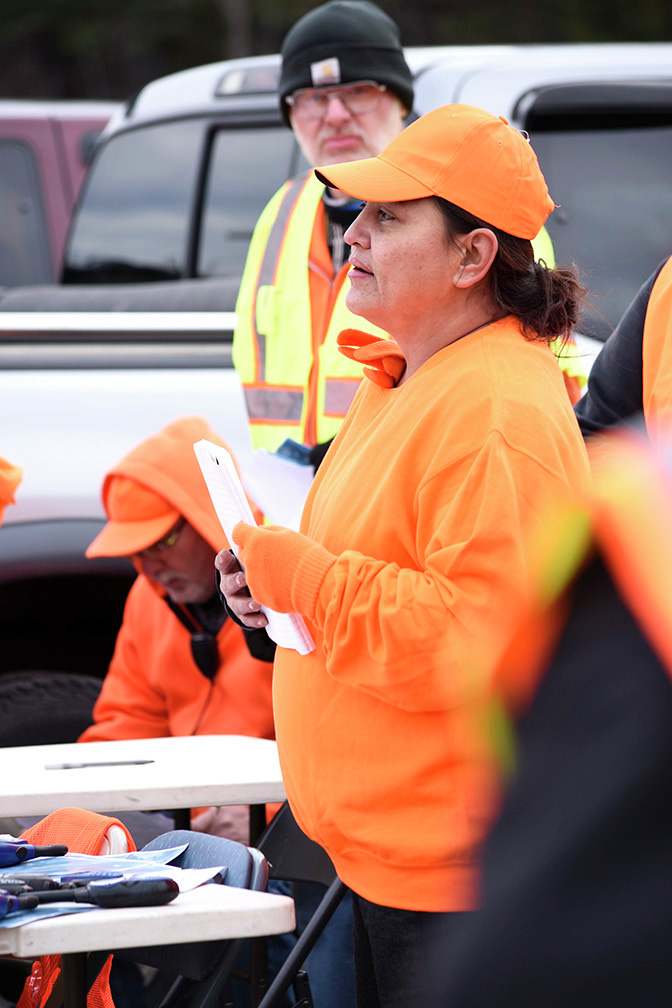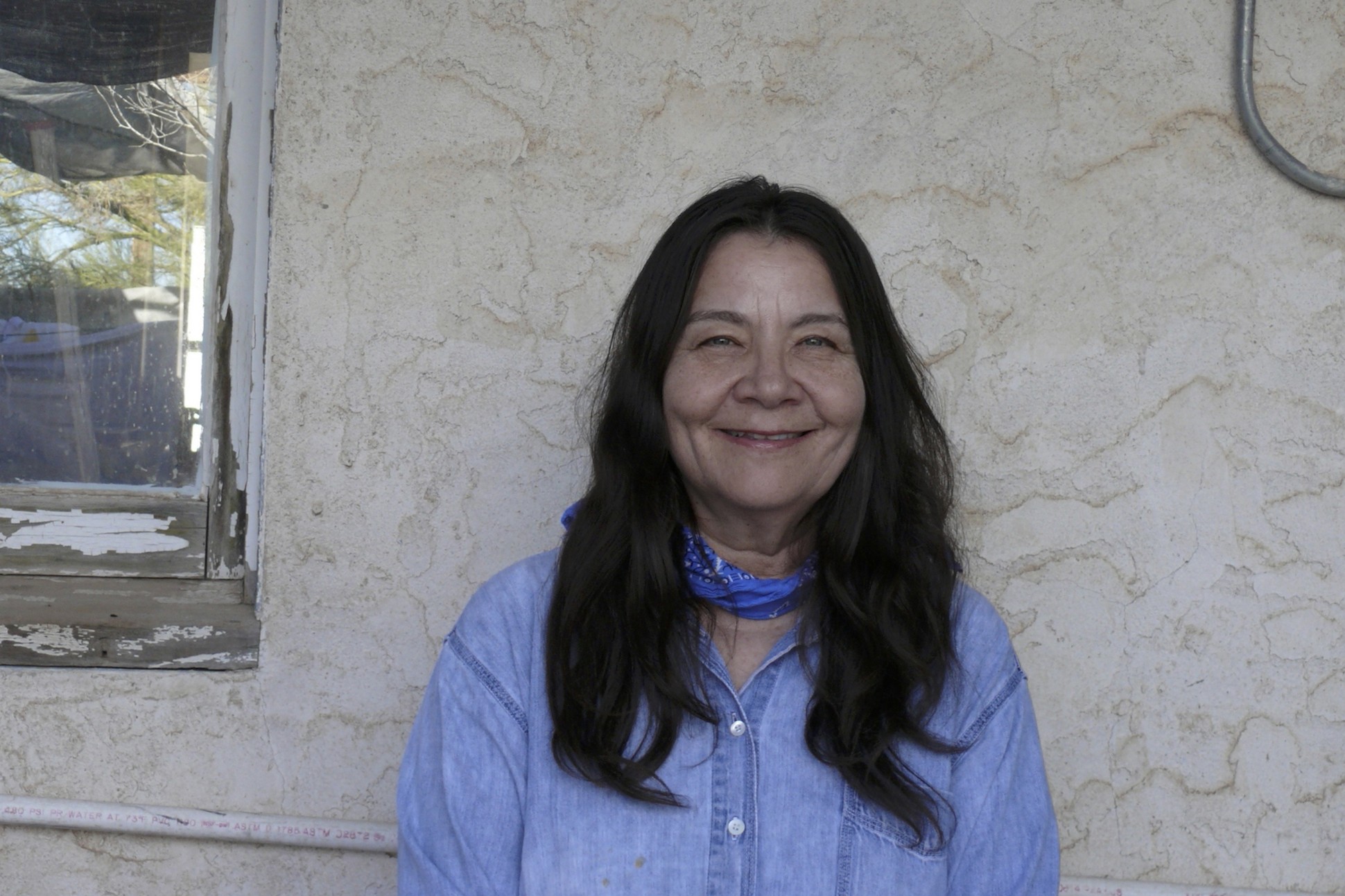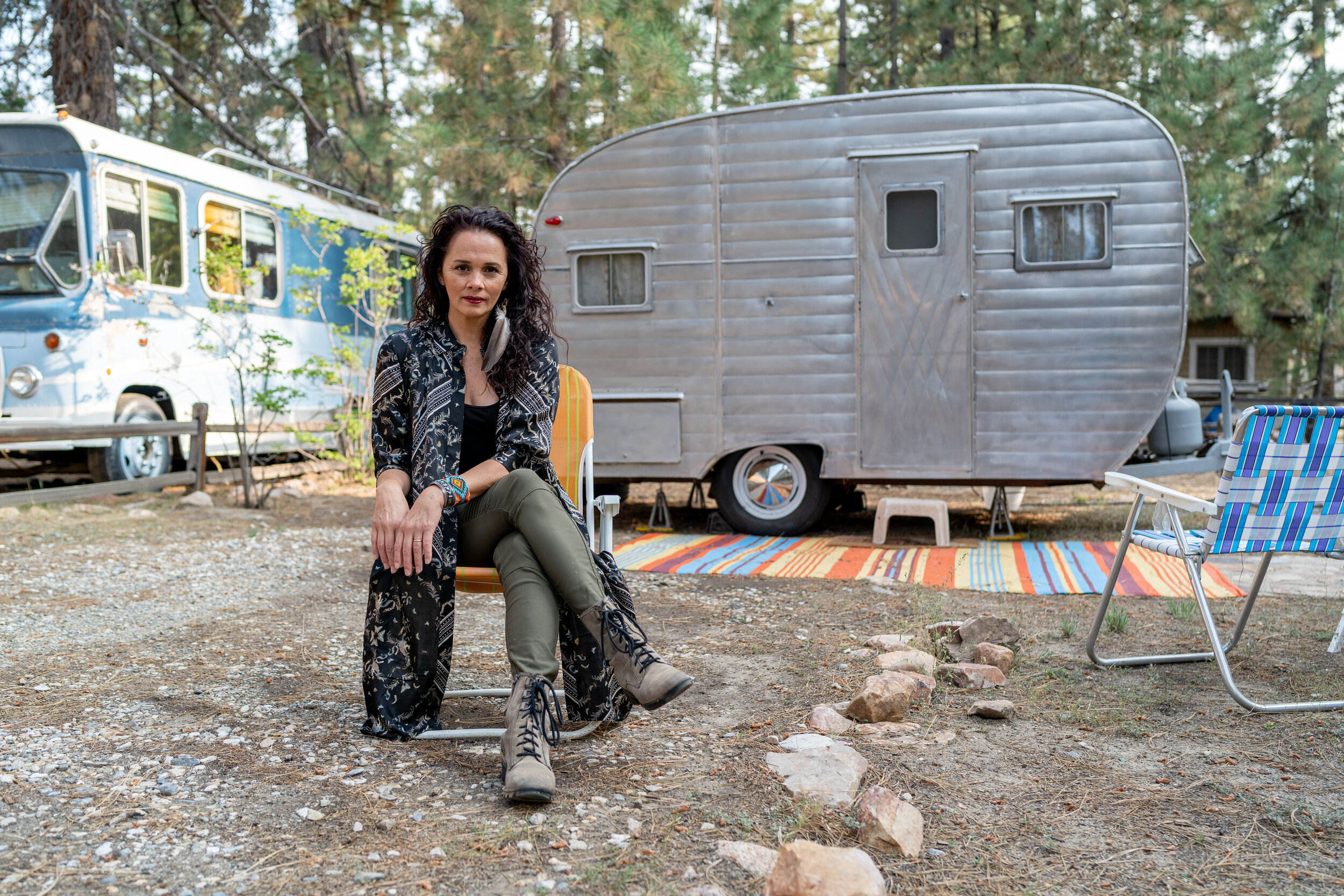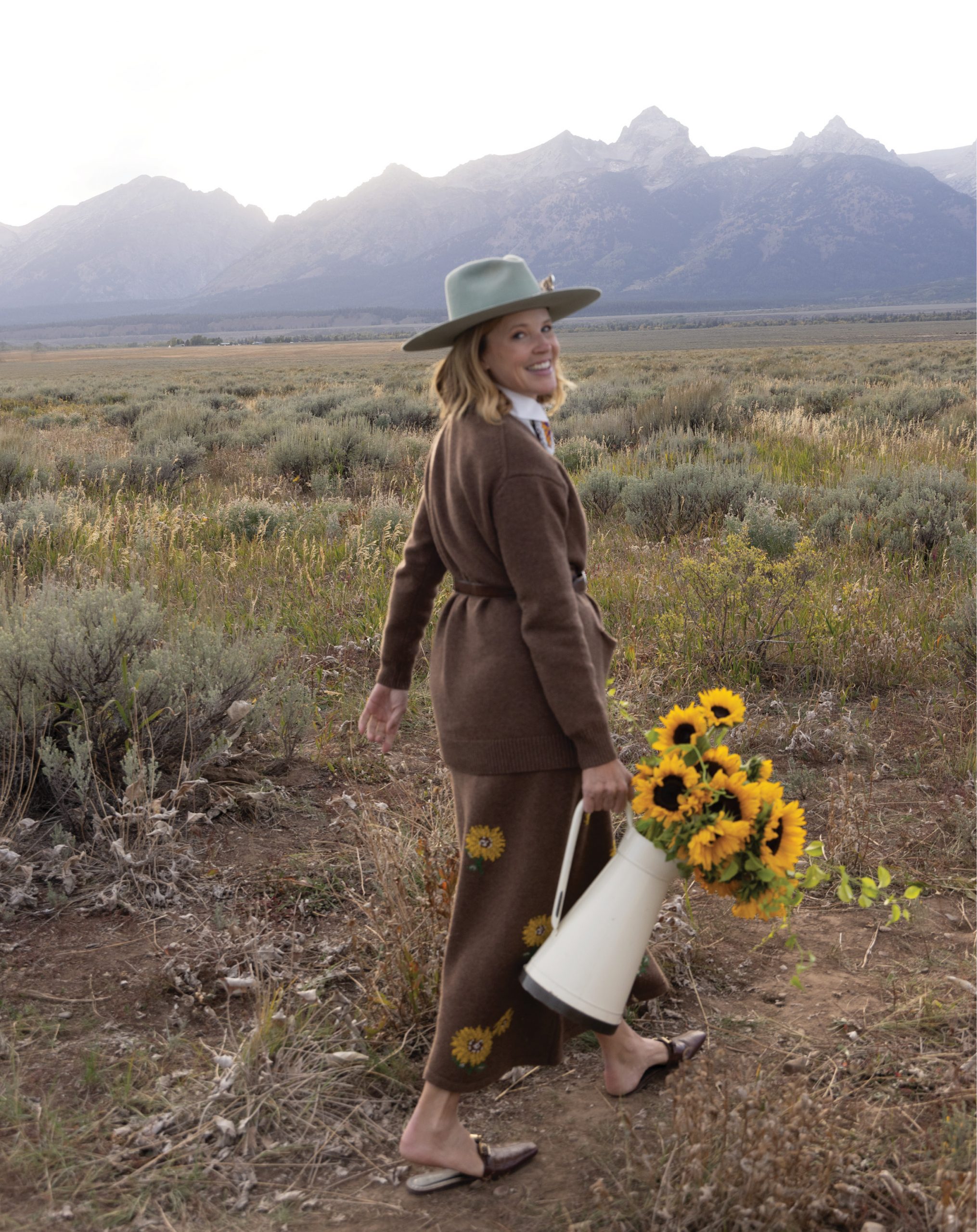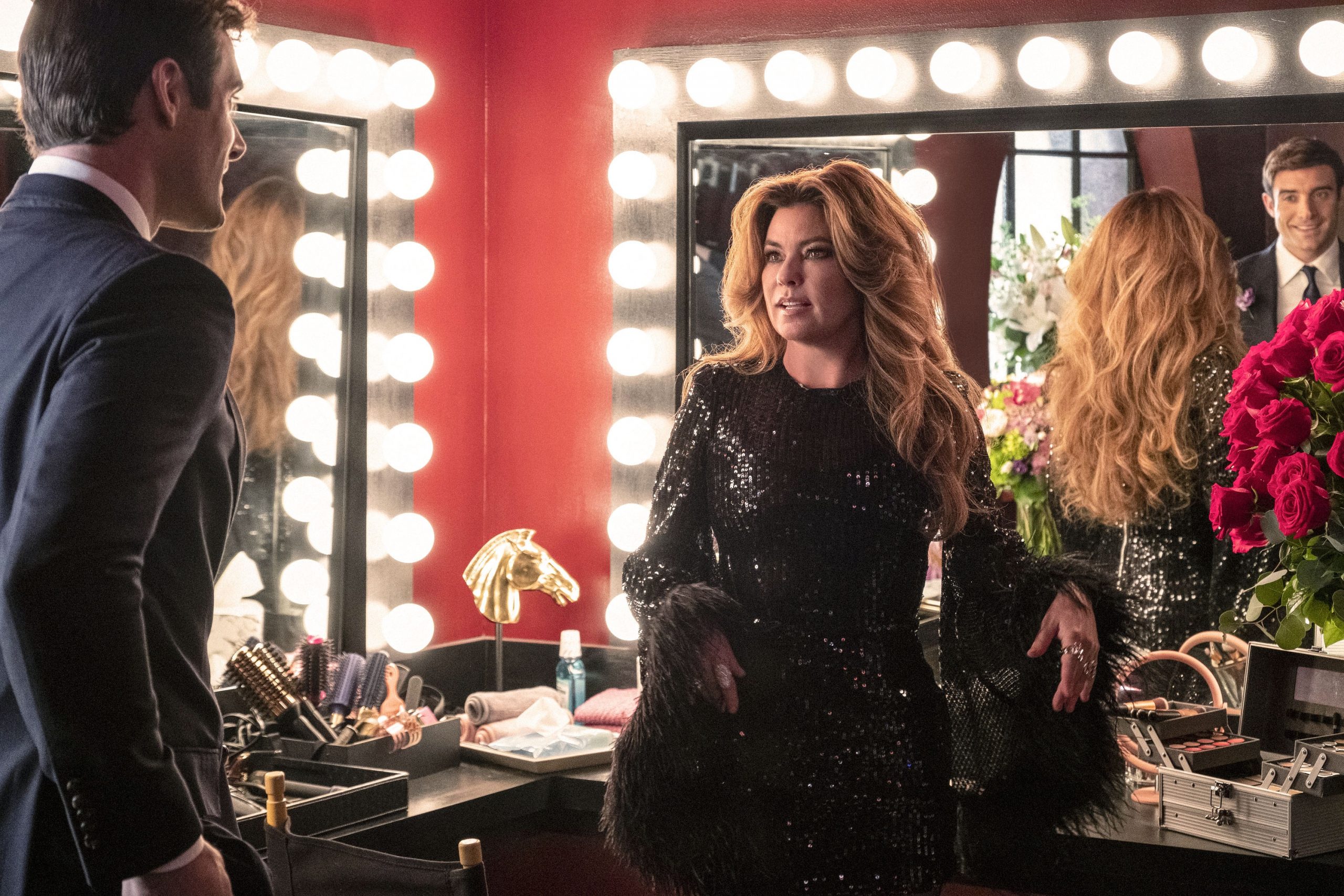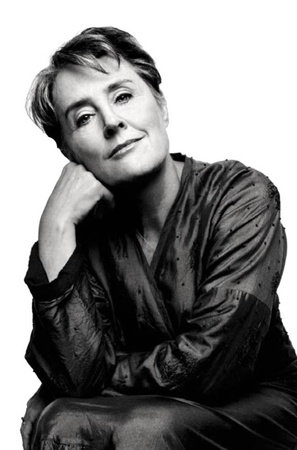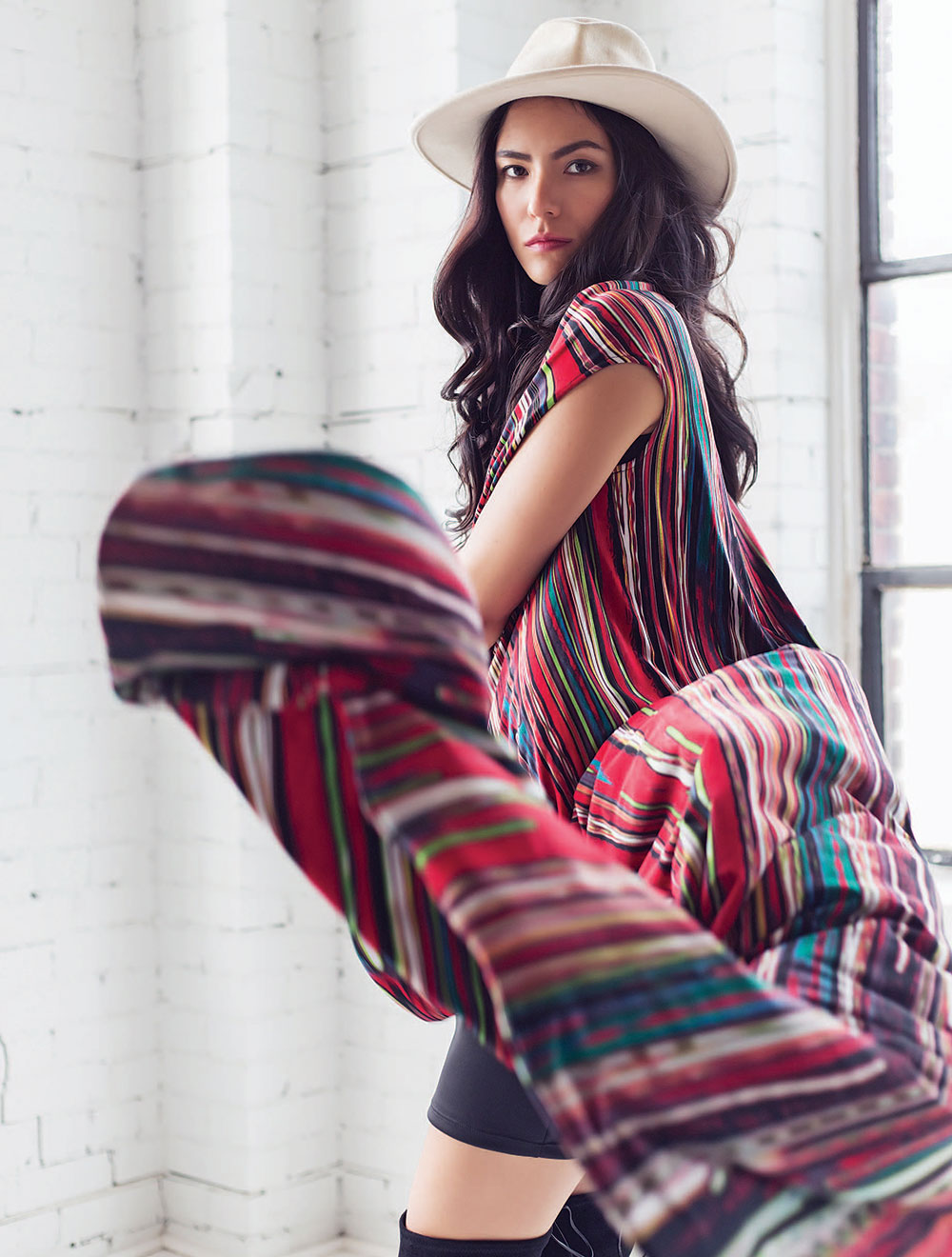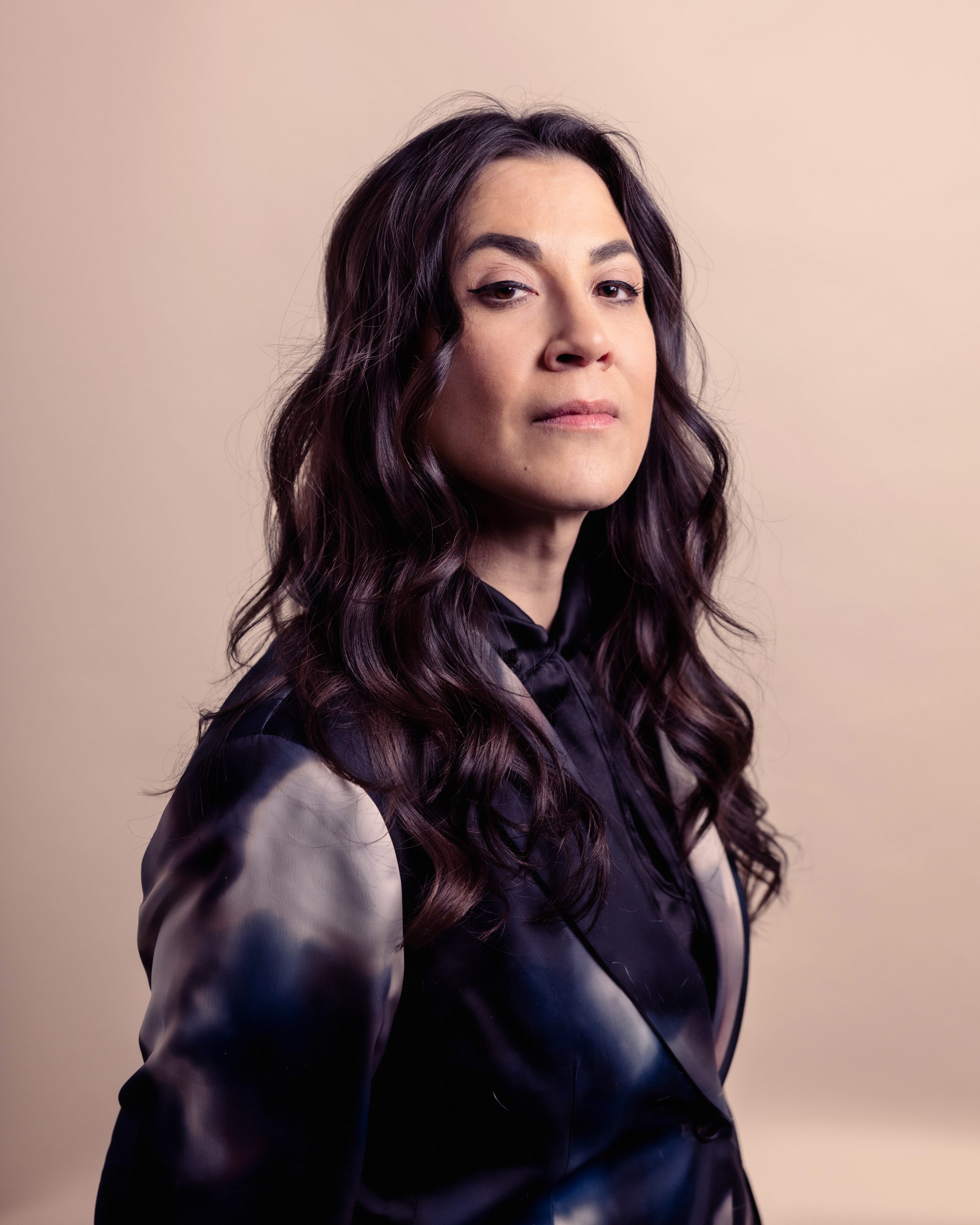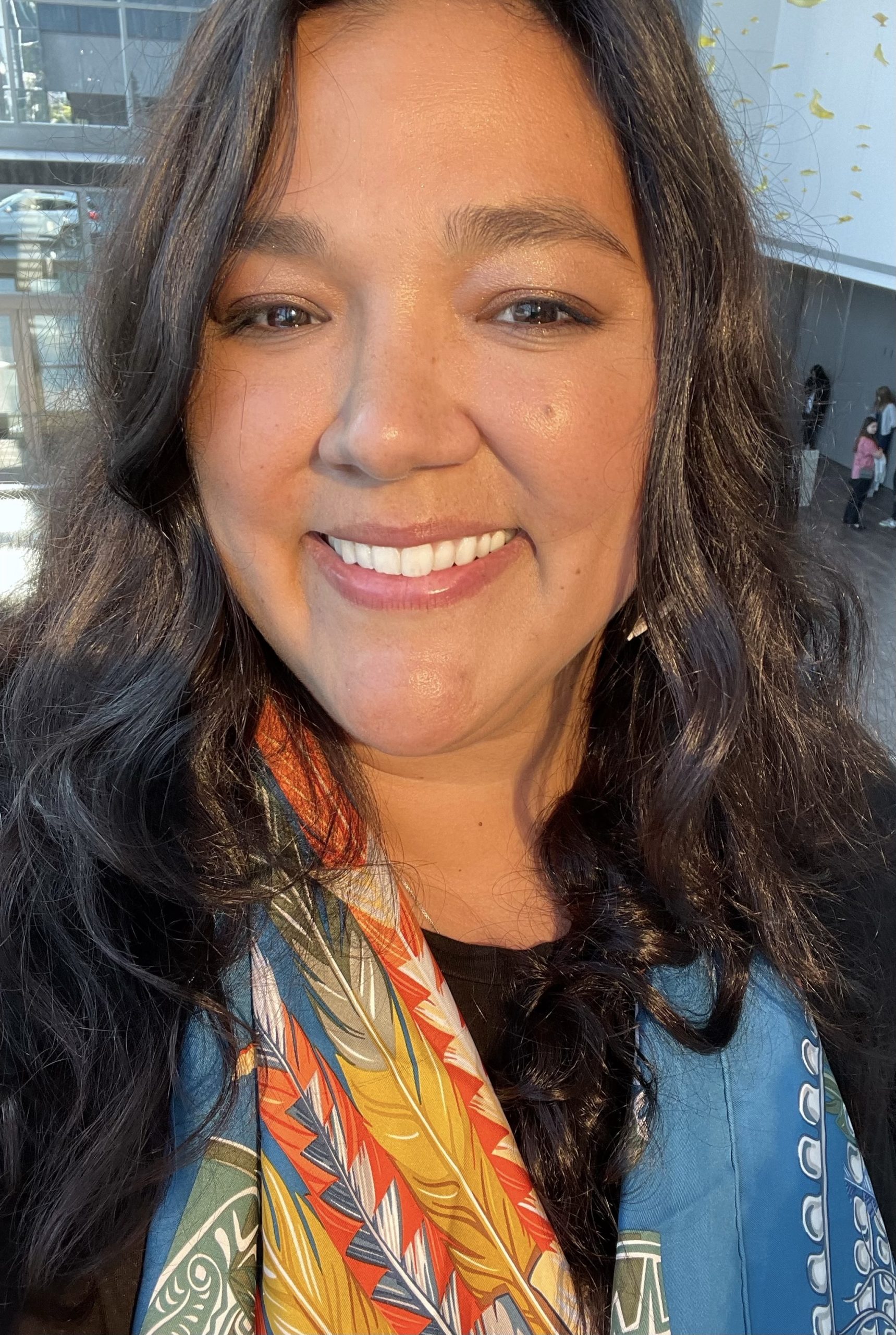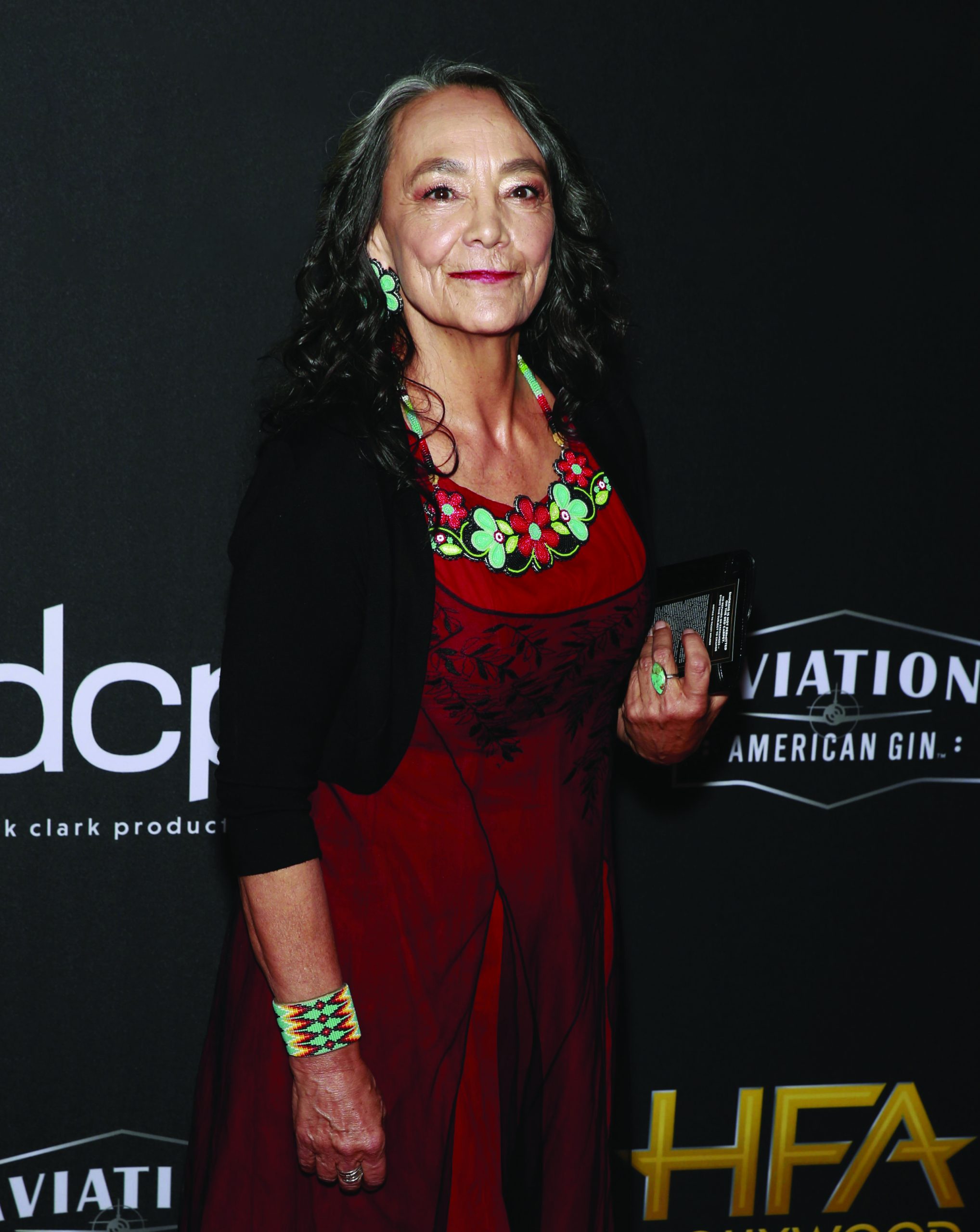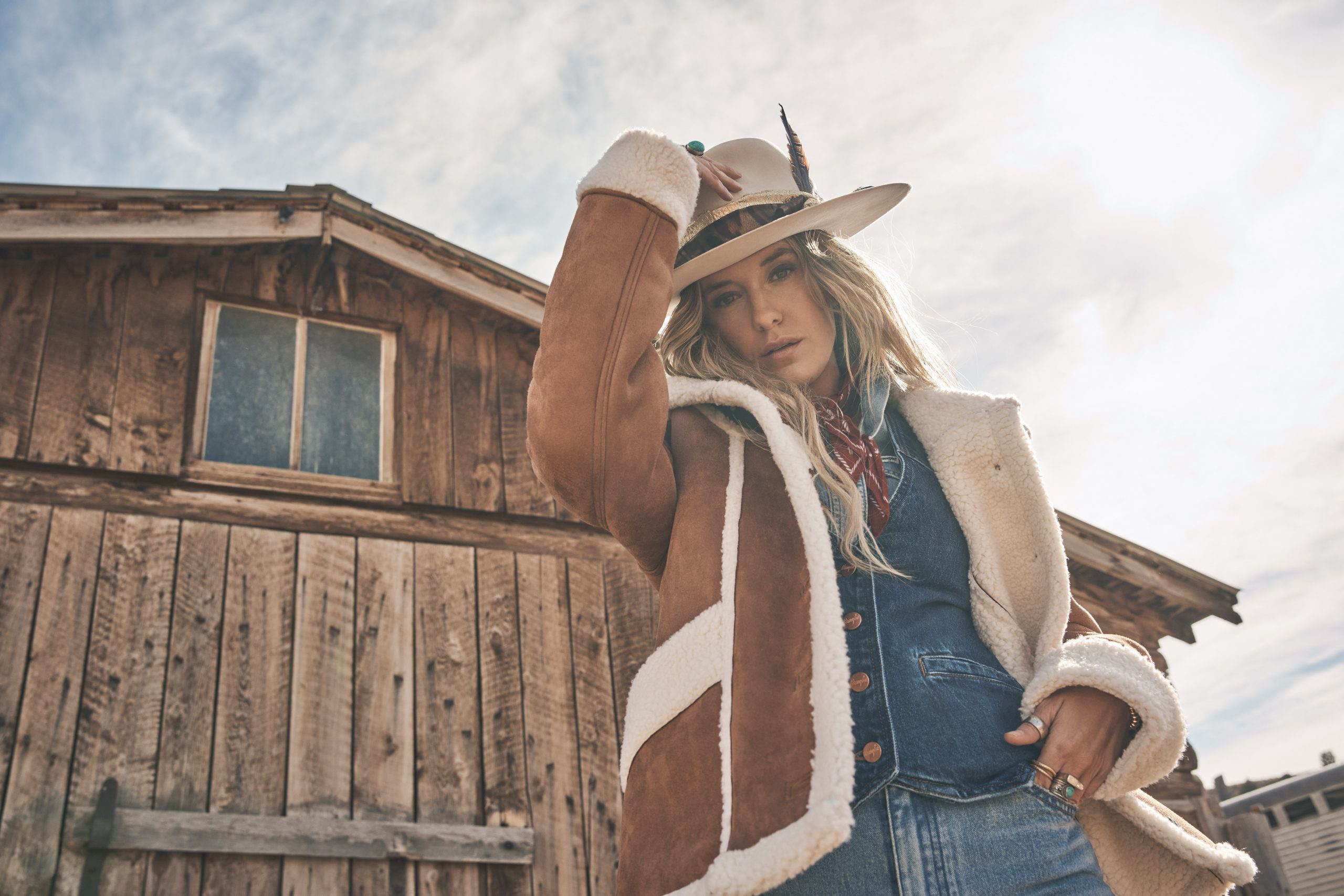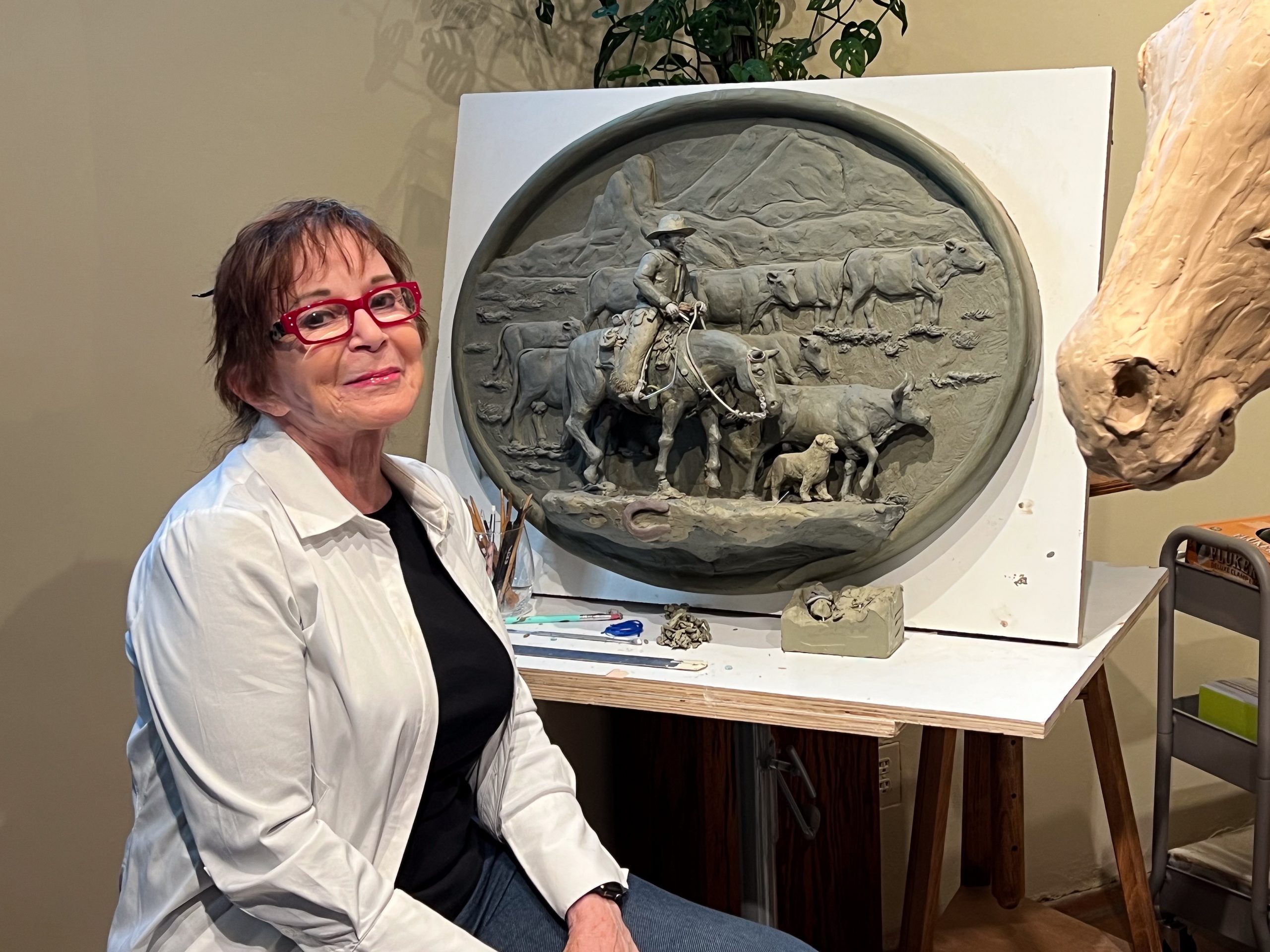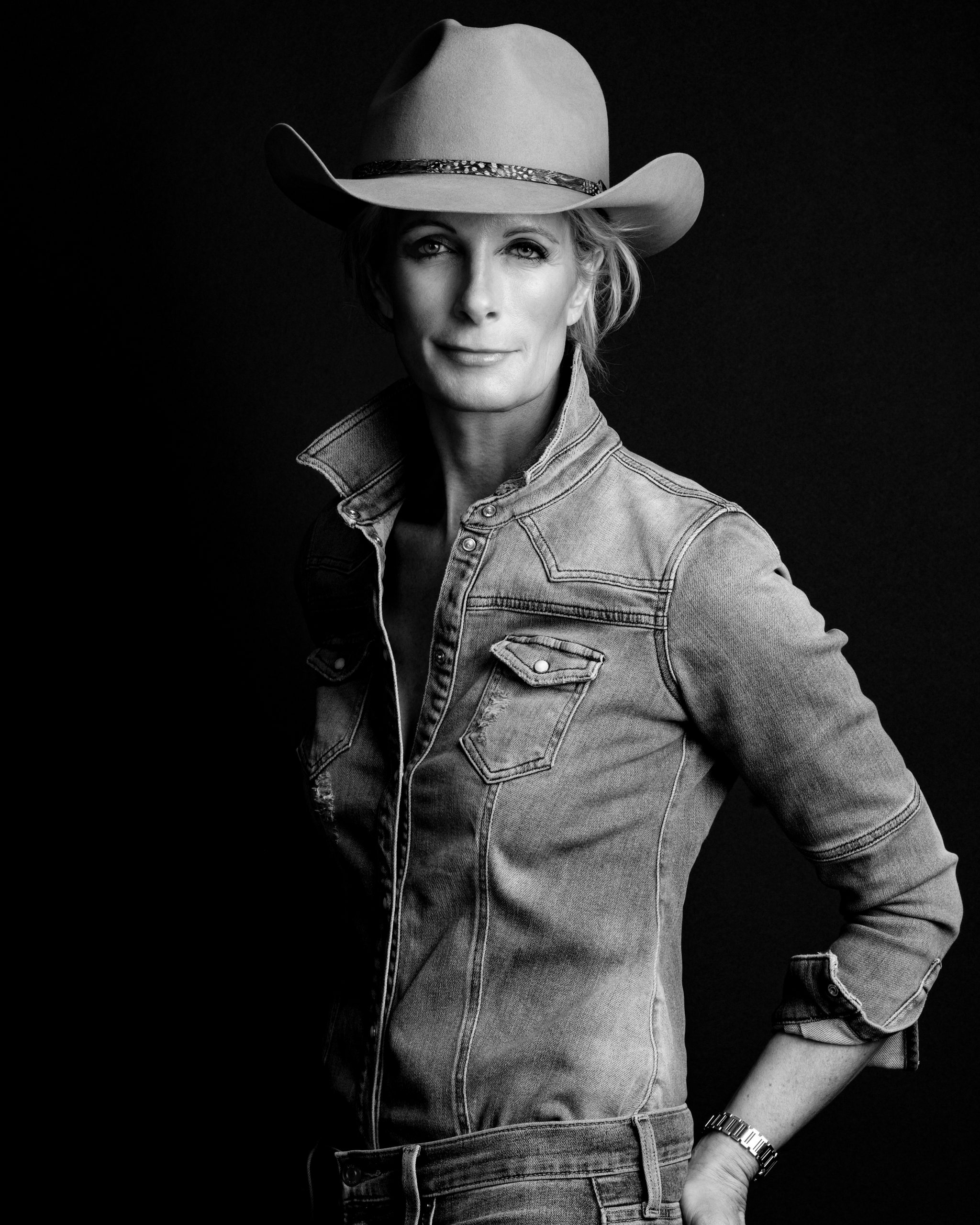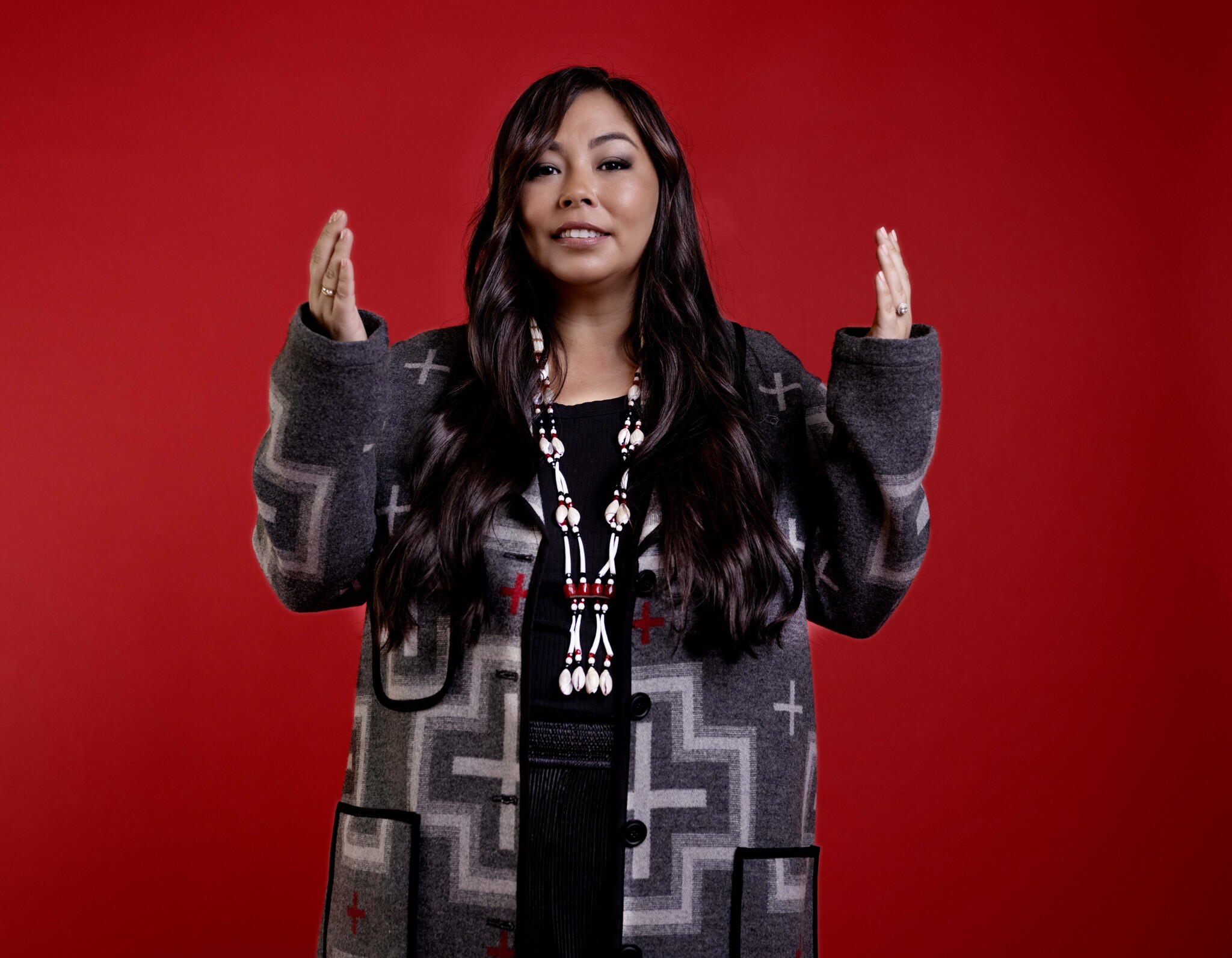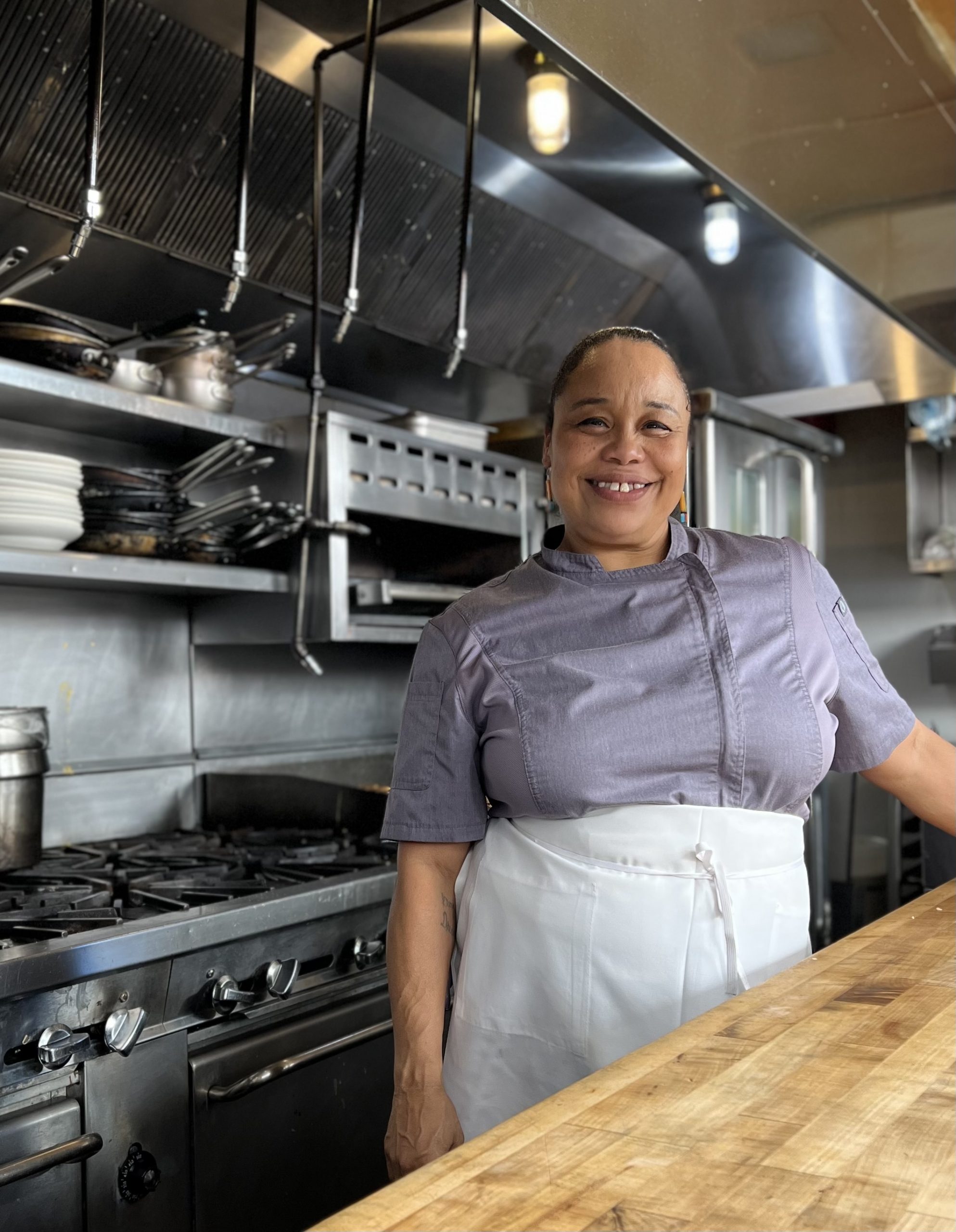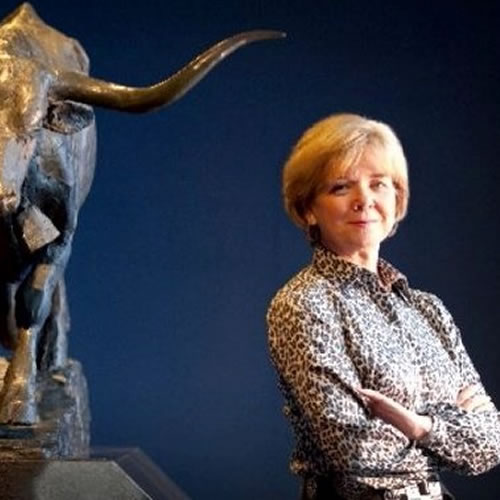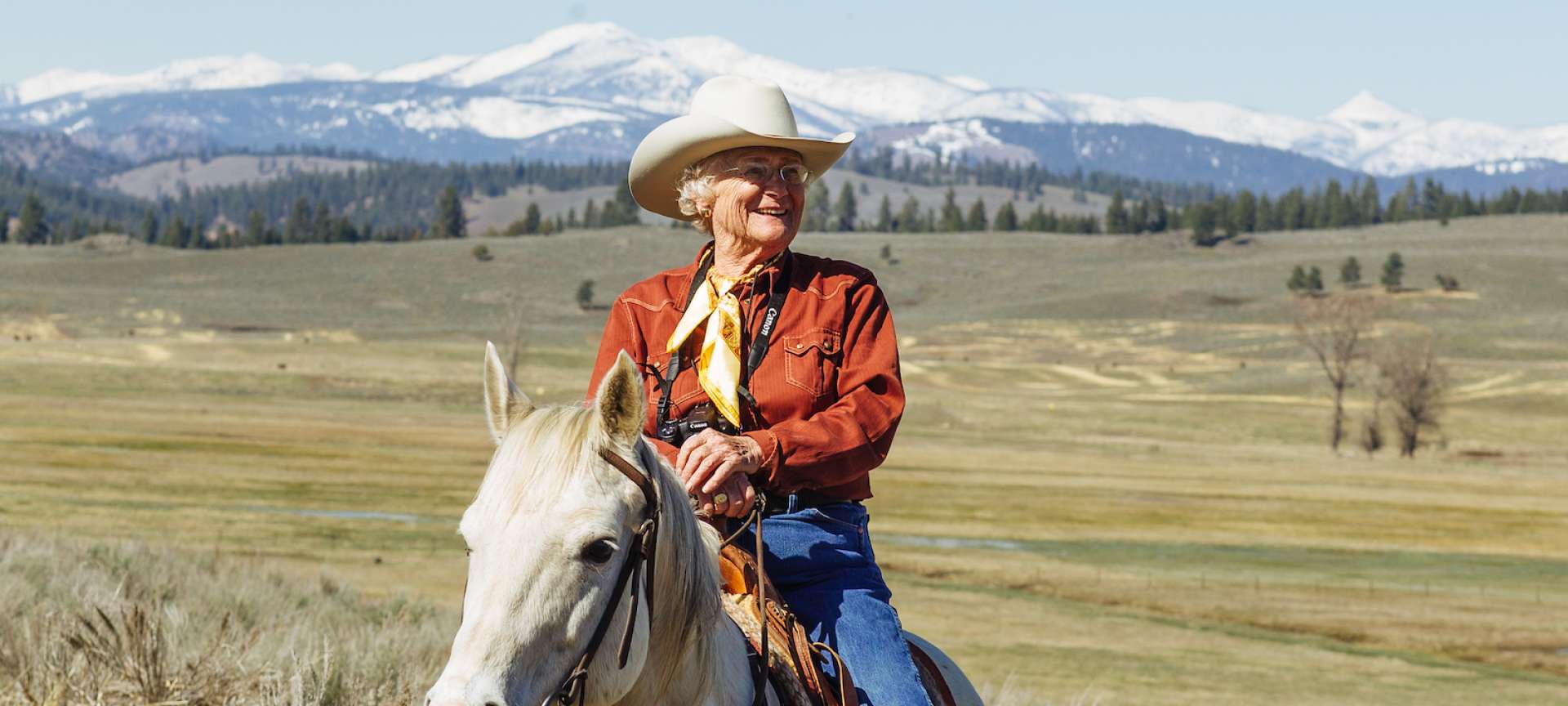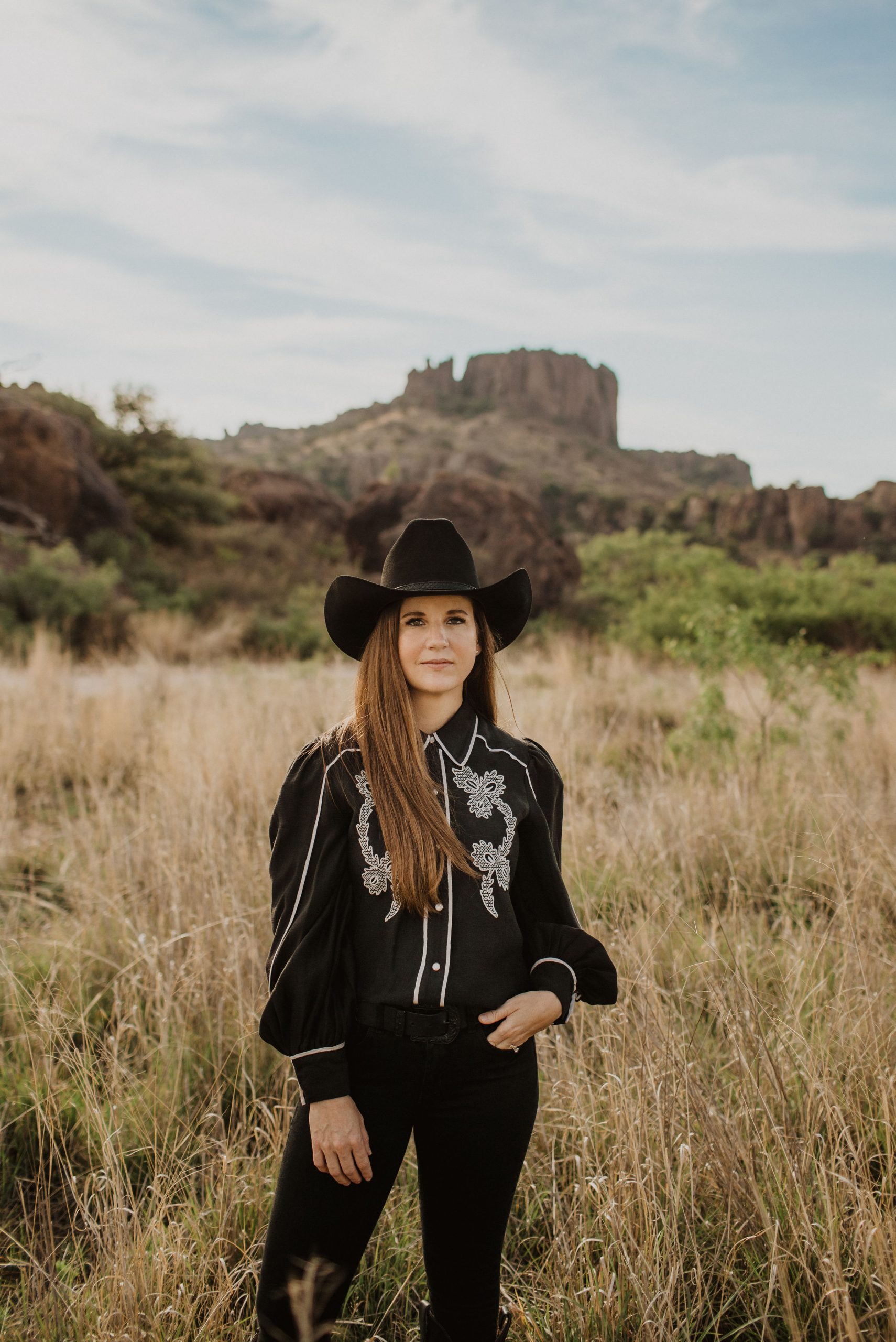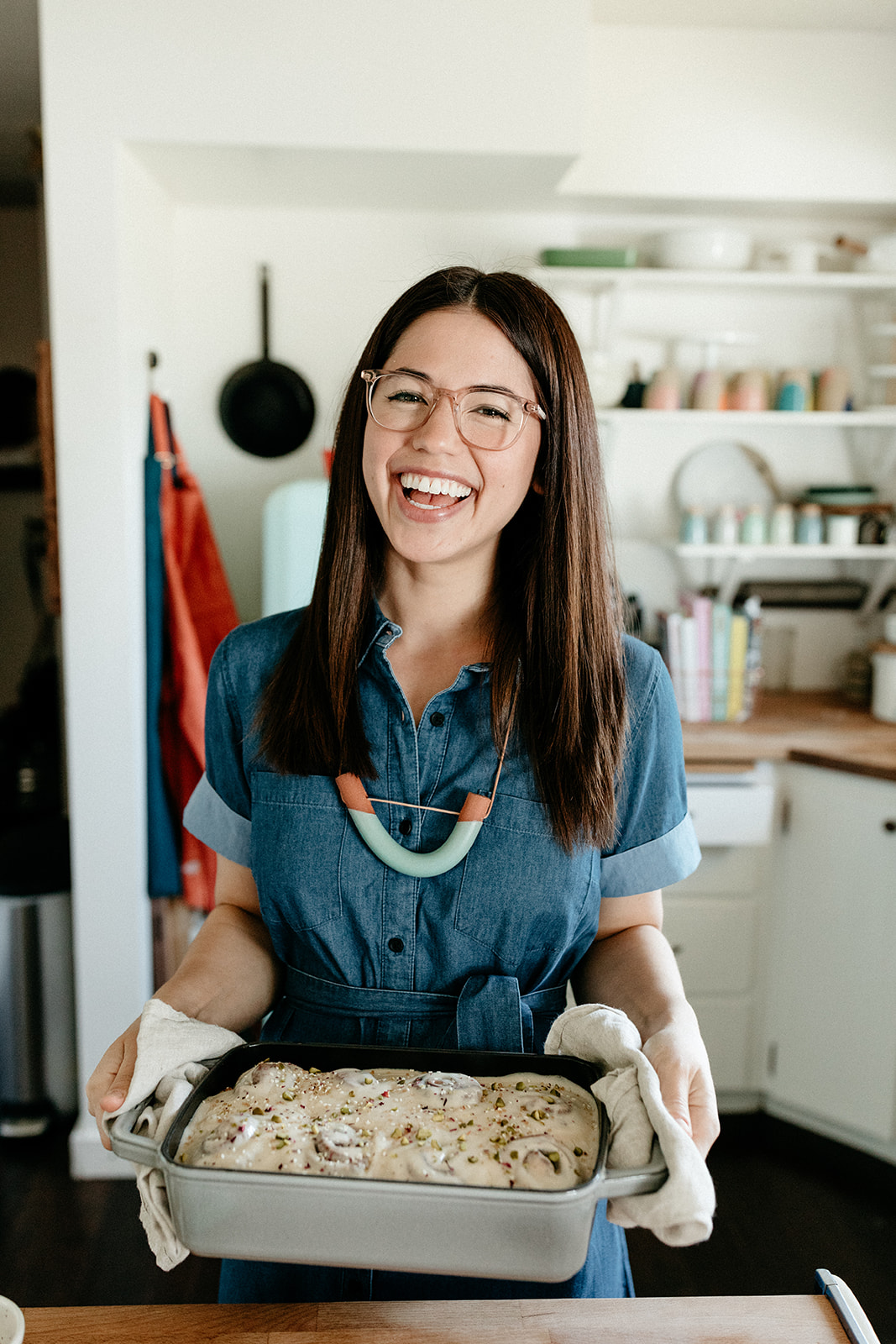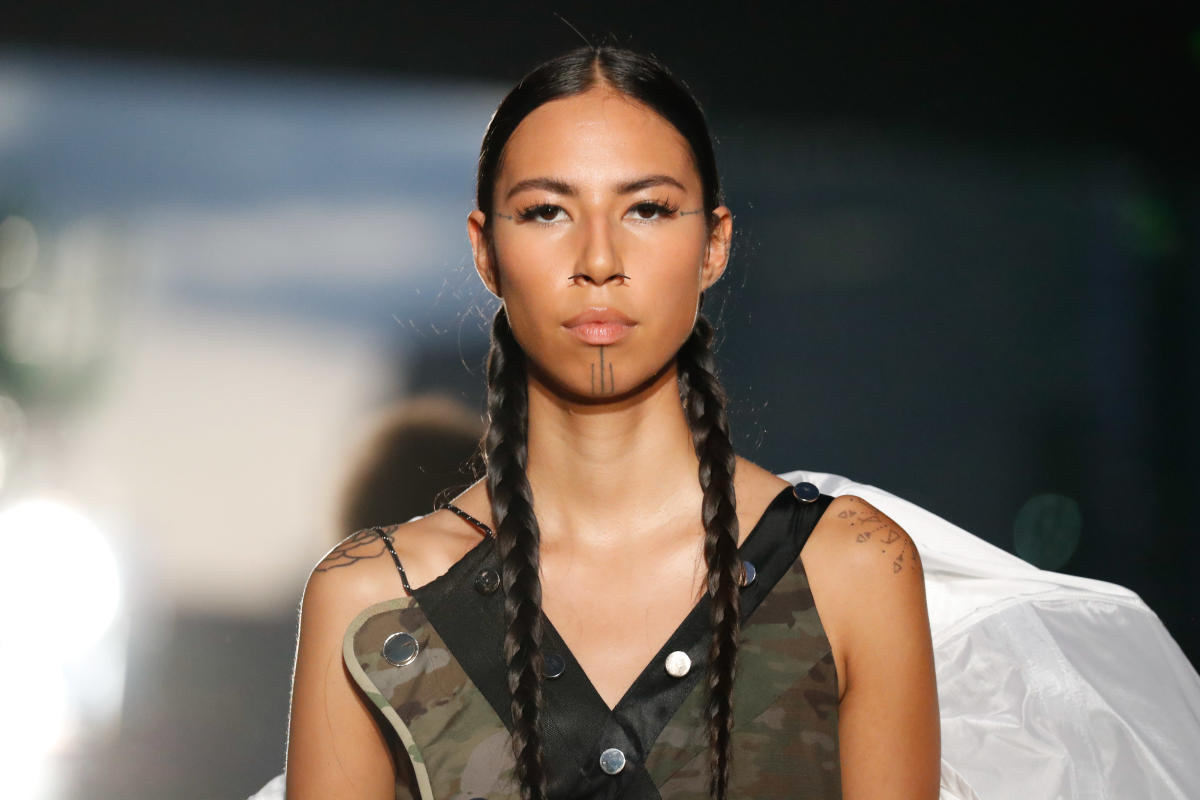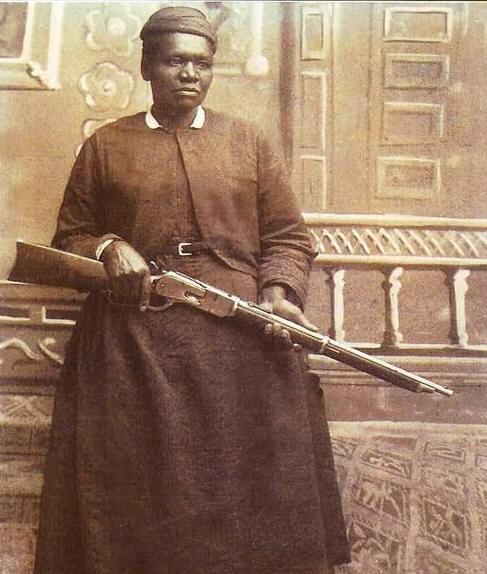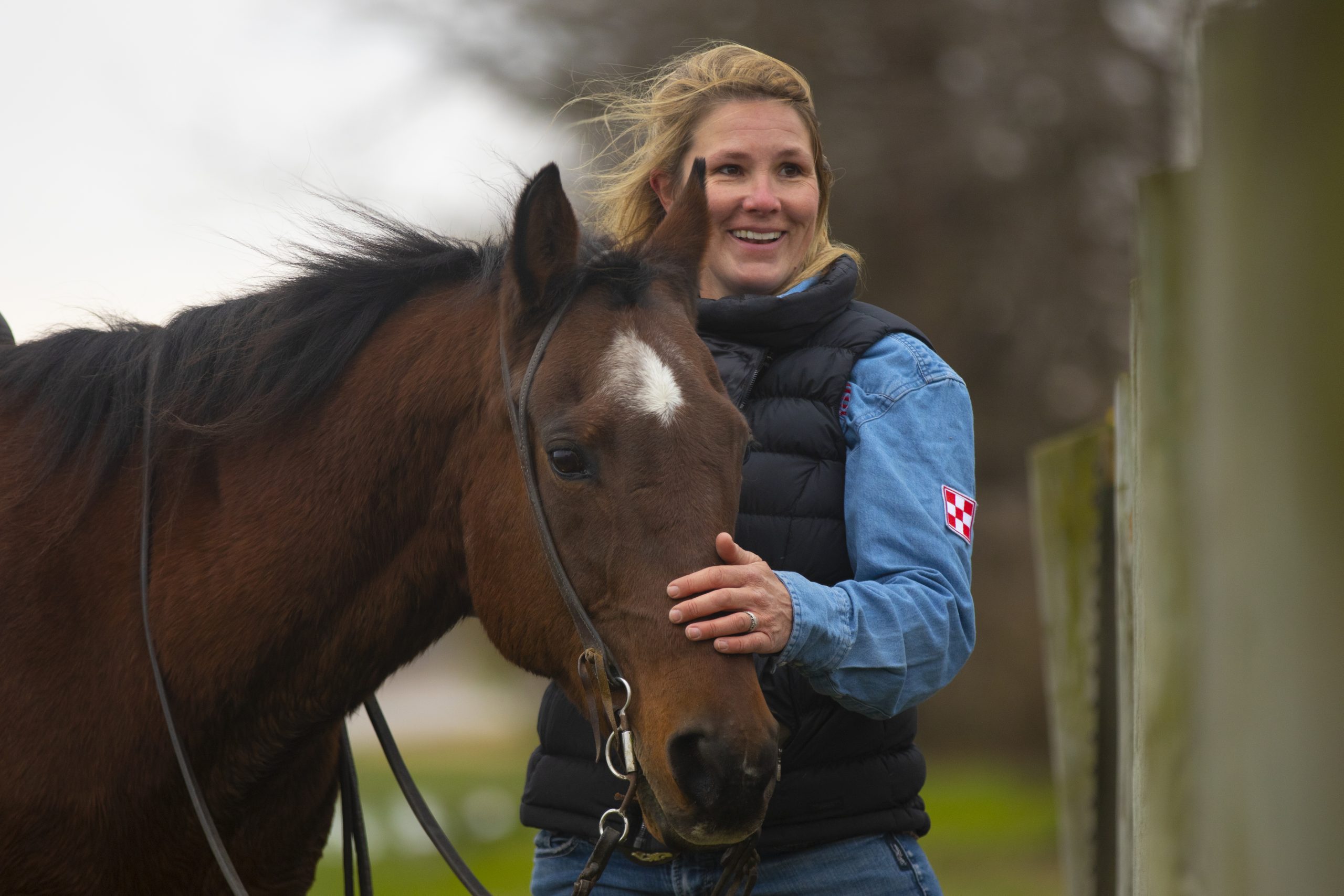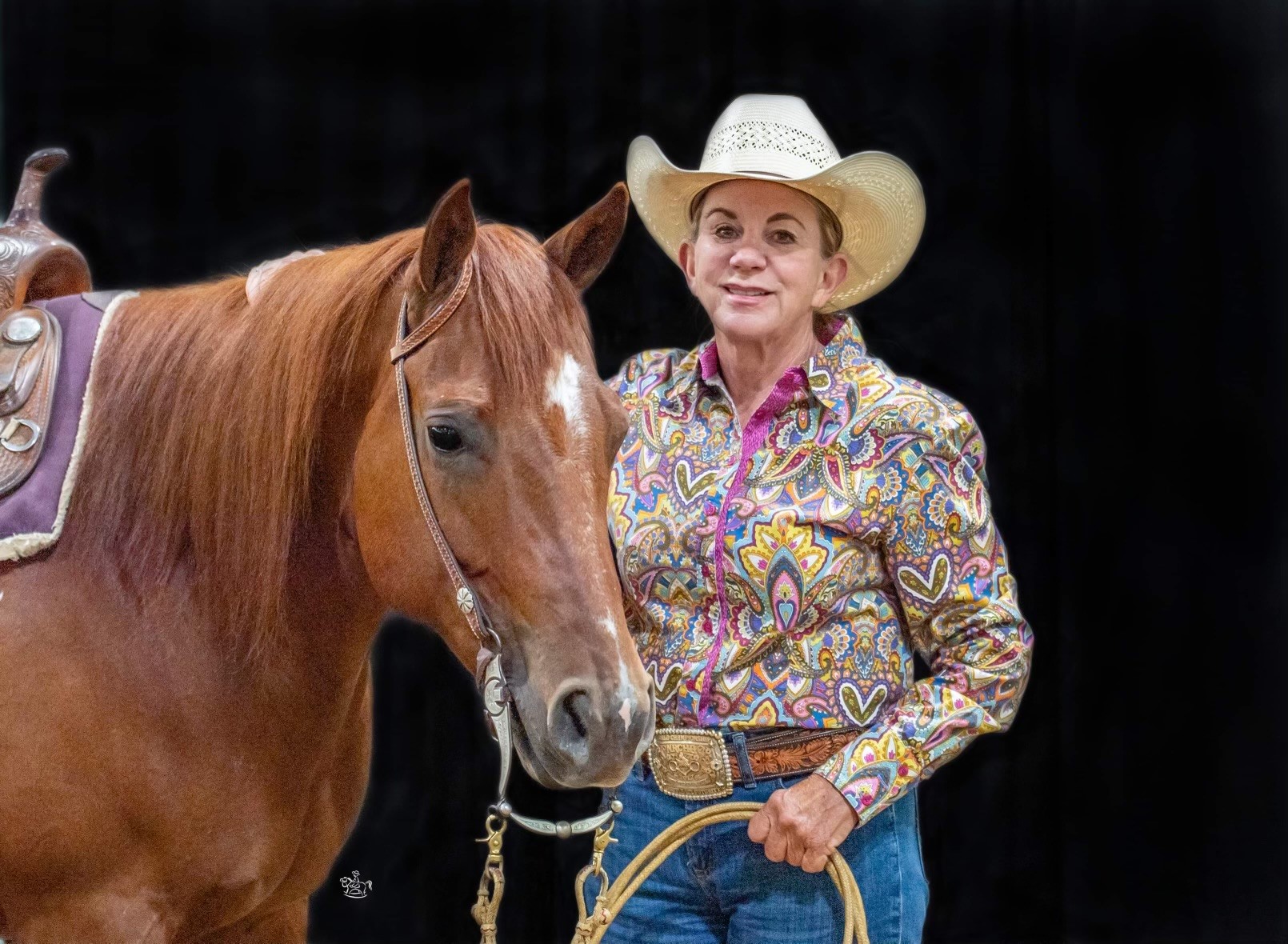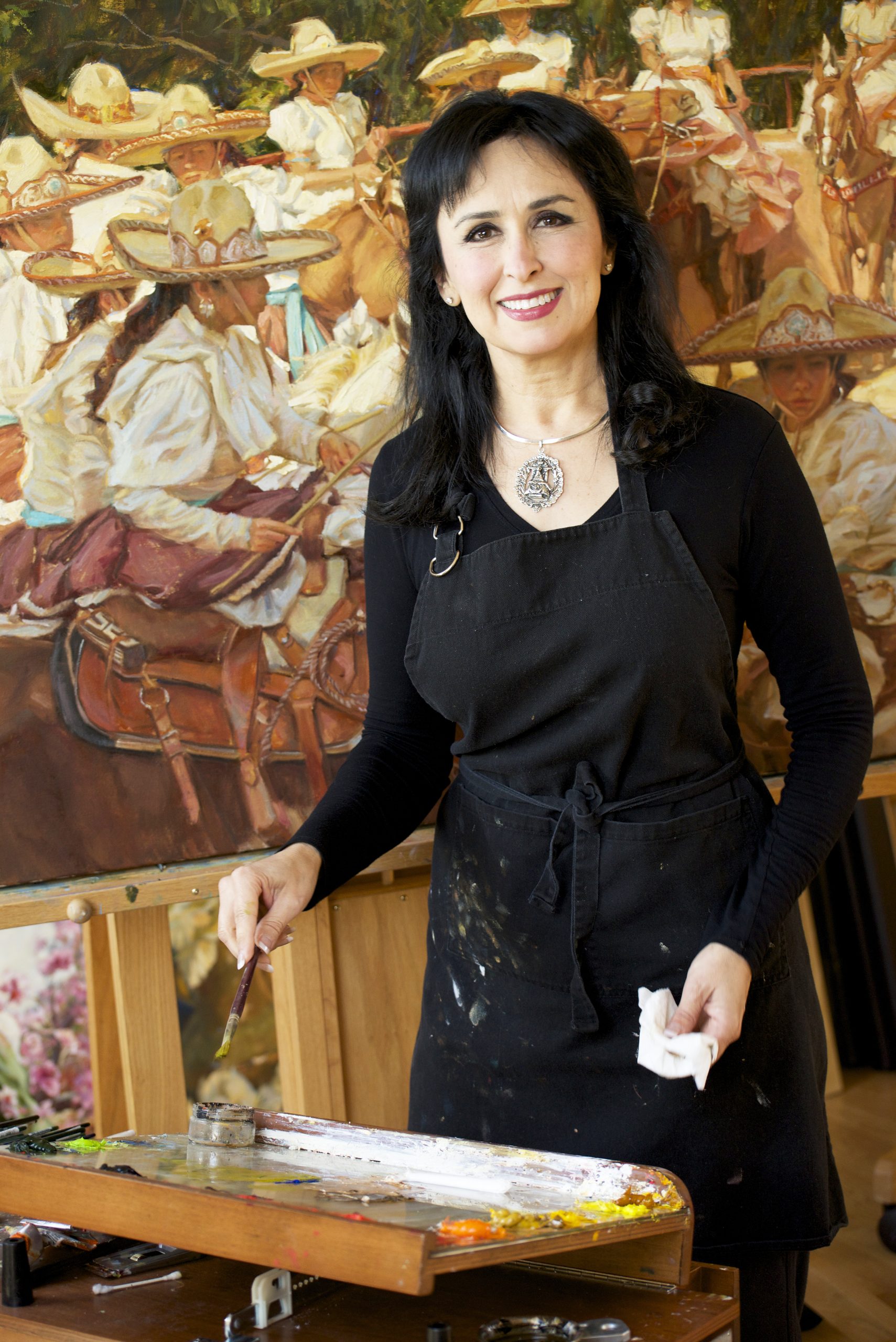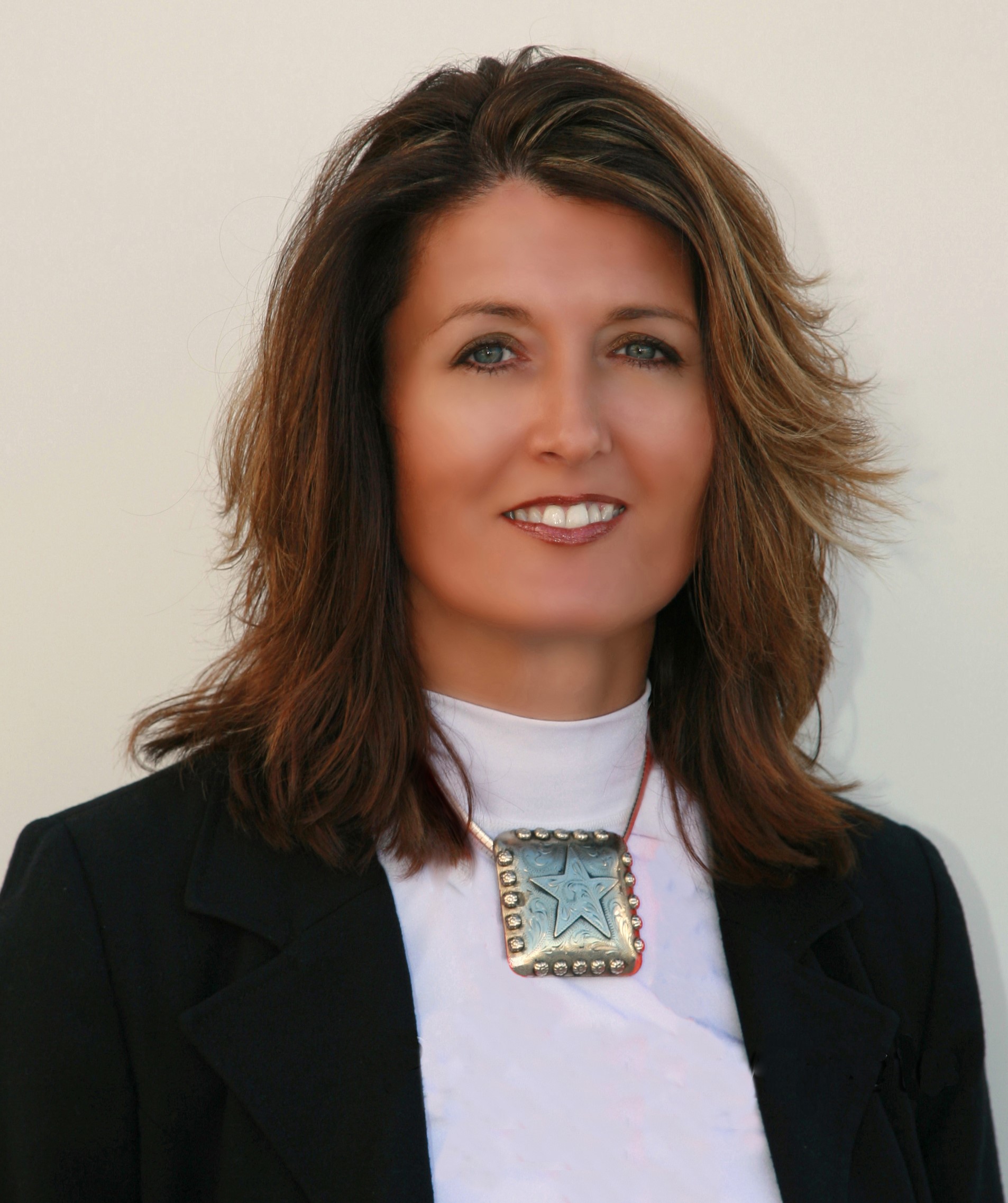Celebrating C&I’s 30 Trailblazing Women Of The West

[ad_1]
We’ve rounded up a list of women who are trailblazers in their respective fields. Here are a few of the many women leaders from all walks of life but who all share that special indomitable spirit.
Whether they be cowgirls, creatives, business owners, or chefs, women make the West go ’round. Check out these incredible trailblazing women, including this year’s Cowgirl Hall of Fame inductees.
Have a trailblazer in mind? Stay tuned for your opportunity to choose the 2024 class of Trailblazing Women of the West.
Donna Hoyt
Claim to fame: General manager of the Indian National Finals Rodeo.
Why she inspires us: For decades, the esteemed Indian National Finals Rodeo event has been focused on offering the Native American community and beyond a unique rodeo experience that celebrates the rich culture of its athletes and fans. At the helm of the organization since 2001 is Donna Hoyt, a member of the Blackfeet Nation. She has played a large part in growing the organization to what it is today and works hard to make sure things run smoothly for the organization’s more than 2,500 members across the United States and Canada.
In her own words: “You, too, can be a champion,” Hoyt said when she was featured in author Carmen Peone’s Inspirational Western Women series. “Remember who you are and where you came from. Always be respectful to the elders and animals.”
—L.W.
Sharaya Edgewater
Claim to fame: 2023 Miss Indian Rodeo.
Why she inspires us: As a member of the Navajo Nation, Sharaya Edgewater proudly represents her heritage on a national stage and is equally eager to share the benefits of rodeo with her Native American community. She is committed to her education and is pursuing a master’s degree in public health.
In her own words: “When I think of dreams or goals, I often think of this quote by Nelson Mandela: ‘There is no passion to be found in playing small—in settling for a life that is less than the one you are capable of living.’ We only have one life, so it is important that we pursue what we are passionate about and not be discouraged by the possibility or fear of failure. You must take risks. You must take chances, because to get something you never had, you have to do something you’ve never done.”
—L.W.
Sarah Dawson
Claim to fame: National Reined Cow Horse Association member, winner at the inaugural American Performance Horseman.
Why she inspires us: As the daughter of a natural-horsemanship clinician, Sarah Dawson has horses in her blood, and her heart—she even met her husband in the industry. Now the pair train performance horses together. This Texas cowgirl has many championships to her name, but she shined on the big stage at the highly coveted American Performance Horseman event earlier this year. Dawson won the reined cow horse event and no doubt helped put a career with performance horses on the radar for young cowgirls everywhere.
In her own words: “Don’t forget, it takes 10 years of hard work to become an overnight success. In this business, one has to learn to create their own opportunities. There are no handouts. If you want it bad enough, keep trudging forward, and success will follow the hard work. What keeps me inspired? The desire to be the best!”
Courtesy of National Reined Cow Horse Association
—L.W.
Mitchelene BigMan
Claim to fame: Founder of Native American Women Warriors (NAWW), the first all-women Native American color guard organization. NAWW has presented the colors while donning traditional regalia at high-profile events across the country like presidential inaugurations and parades.
Why she’s a trailblazer: Apsáalooke/Hidatsa U.S. Army veteran and advocate BigMan helms the nonprofit to help Native women veterans receive recognition and necessary assistance in areas like transition from the military, recovery from PTSD and other trauma, and employment readiness. She joined the military in 1987, retired in 2009, and has worked since as an advocate for fellow Native women warriors.
Her mantra: “NAWW is on a mission to bring recognition to women veterans of Native descent that have served in our military armed forces. [The] vision is to assist women veterans with employment, education, and health, to become stronger in mind, body, and spirit.”
How you can help: The Native American Women Warriors have been asked to represent the United States as the leading color guards in the 80th D-Day parade in Normandy, France, in June 2024. They are currently raising money for the trip; you can make a donation online at nawwassociation.com.
—K.N.
Kirsten Vold
Claim to fame: Owner of Vold Rodeo Company.
Why she inspires us: Kirsten Vold is the daughter of rodeo royalty. Acclaimed contractor Harry Vold is her father, and her mother, Karen Womack Vold, is a trick rider in the National Cowgirl Hall of Fame, but beyond her parents’ legacies, Kirsten has more than made a name for herself in the sport of rodeo. As the accomplished head of Vold Rodeo since the young age of 25, she has upheld the rodeo company’s reputation and achieved regular National Finals Rodeo qualifications during her tenure. The strong and determined cowgirl, who is now a hall-of-fame inductee herself, has perfected a large breeding program on the family’s Colorado ranch to help preserve the talent and beauty of the bucking horse.
In her own words: “If you want to do something, be willing to do the work and grow a thick skin, and nobody will be able to stop you.”
—L.W.
Patricia Kelly
Claim to fame: Activist and founder of the nonprofit Ebony Horsewomen, Inc.
Why she inspires us: A military veteran and Black cowgirl, Patricia Kelly founded Ebony Horsewomen in 1984 to offer inner-city youth the same opportunities for growth and enjoyment that horses provide those who were born around them. The organization expanded to provide equine-assisted psychotherapy for children and adults, including veterans, who struggle with their physical and/or mental health. Through the Black Boots Awards program, Kelly also works tirelessly to shed light on the accomplishments of Black equestrians in the industry.
In her own words: “It hurts my heart to see that part of the [horse] industry is so exclusive,” she said as a guest on The Equestrian Podcast.
“It just sends my blood pressure up because it shouldn’t be that way. Horses don’t care about that kind of stuff.”
—L.W.
Joanna Gaines
Claim to fame: Star of HGTV’s Fixer Upper, interior designer, entrepreneur, and founder of the highly successful lifestyle brand Magnolia.
Why she inspires us: The Fixer Upper queen who has inspired people around the world to make their homes as beautiful as possible has also inspired us to live beautifully, too. Whether it’s the enjoyment from a curated collection of home goods, a mouthwatering recipe, or a richly planted garden, the best of the simple things in life are found with intention, and Gaines seems to embody that intention through her creative business endeavors and her role as a loving mother and wife.
Fun facts: Gaines’ book Magnolia Table, Volume 3 came out in late May this year. And the Gaines’ Shops at the Silos is a popular Central Texas shopping destination.
In her own words: “You realize I have this one beautiful life to live, and I can choose how I live it,” she told the TODAY show. “I can choose how I carry and hold my story. It’s just so much worth the work so that I step in as whole as I can so I can see things and I can enjoy moments in a really rich and intentional way.”
—L.W.
Irene Bedard
Claim to fame: The Golden Globe nominee rose to fame as the voice actress behind the title role in the 1995 movie Pocahontas and for her role as Suzy Song in the 1998 film adaptation of Sherman Alexie’s Smoke Signals.
Why she’s a trailblazer: The first person of color to voice a Disney princess in the first animated film with a Native character at its center, this Inupiaq/Yu’pik/Cree/French Canadian actress has played numerous lead roles for three decades, bringing Native authenticity to movies and TV shows alike, including Into the West, Longmire, Westworld, and, more recently, Alaska Daily.
On the legacy of Pocahontas: “At the time, there had never been something so directly relatable to a generation of children that could introduce them into Indigenous culture,” she explained to Geek Anything. “There were so many positive aspects to that, even in having the relationship to her elders and the relationship to the animals, the Earth, and the trees around her, who are all her relatives—that interconnectedness that all Indigenous people have. And that understanding that we look at each other as human beings first before anything else.”
—K.N.
Lillian St. Cyr
Claim to fame: More than a century ago, the Ho-Chunk actress became the first Native woman to star in a silent film under her stage name, Red Wing.
Why she’s a trailblazer: In addition to helping preserve performing traditions and promoting Native culture throughout her 90-year lifetime, she was also a talented stuntwoman, horsewoman, choreographer, costume/prop designer, and bead worker, as well as an actor in countless uncredited roles in the silent-film era.
Her rise to fame: After being orphaned at age 4, she was sent to an Indian boarding school, where she started performing in front of audiences enchanted by the so-called noble savage. She went on to star in several films, culminating in her appearance in Cecil B. DeMille’s 1914 The Squaw Man. Although many of their productions include problematic depictions by today’s standards, she and her husband, director James Young Deer, were considered Hollywood’s first Native power couple.
—K.N.
Molly Spotted Elk
Claim to fame: Born Mary Alice Nelson, this talented Native dancer took both America and Europe by storm during the ’20s and ’30s.
Why she’s a trailblazer: This free spirit was a force to be reckoned with: at once a scholar, a writer, an artist’s model, a dancer, and an actress. She starred in the celebrated 1930 Paramount film The Silent Enemy, featuring an Indigenous cast.
How tragedy followed her: She was both born and laid to rest on Maine’s Penobscot Indian Island Reservation, with a lifetime marred by tragedy in the years in between. When she was forced to flee France during World War II, her French journalist husband went missing. Years later, her only grandson—who was involved in the 1973 American Indian occupation of Wounded Knee—was mysteriously killed. As her Native American Hall of Honor charter certificate in Page, Arizona, explains: “Molly Spotted Elk’s life made a full circle. It was a trail of tears.”
—K.N.
Tonantzín Carmelo
Claim to fame: The Native/Latina actress, musician, and dancer is best recognized for her breakout role as Thunder Heart Woman in Steven Spielberg’s Emmy-winning miniseries Into the West.
Why she’s a trailblazer: In addition to her many acting credits—which have earned the Tongva/Kumeyaay star coveted accolades like a Screen Actors Guild Award nomination—she is also a mentor and committee member for Native Voices at the Autry Museum of the American West, the country’s only Equity theater company devoted exclusively to producing new works by Native playwrights.
Fun fact: She’s got game as a talented voice-over artist, too, portraying Kendra Daniels in the popular EA Game franchise Dead Space and Roxanne in Ubisoft’s The Crew.
—K.N.
Lissa Yellow Bird Chase
Claim to fame: An enrolled member of the Mandan, Hidatsa, and Arikara Nation, she founded the nonprofit Sahnish Scouts in 2013 to respond to the disappearances of Indigenous individuals in North Dakota.
Why she’s a trailblazer: Although the Missing and Murdered Indigenous Persons epidemic is finally starting to get the attention it deserves, there remains so much work to be done in addressing the crisis. Sahnish Scouts brings together volunteers to help investigate active cases and search for missing relatives, long after law enforcement efforts have tapered off.
What keeps her going: “If you’re just out there somewhere on the land, dead, and nobody’s looking for you—that’s the worst thing in the world,” she says in Vanished, a documentary from The Atlantic. “I think everybody deserves to be found.”
—K.N.
Leslie Marmon Silko
Claim to fame: The acclaimed Laguna Pueblo poet, novelist, and essayist is considered one of the premier writers in the First Wave of the Native American Renaissance.
Why she’s a trailblazer: Her 10 books—which depict tribal peoples’ struggles to maintain their cultures in a colonized world—have earned her plentiful acclaim and accolades. Her 1977 debut novel, Ceremony, remains one of the most important Indigenous works to this day.
On storytelling: “I think of storytelling as a part of healing,” she shared with The New Yorker. “The body of healing stories and storytelling are held communally and are practiced together and always have been.”
—K.N.
Larissa FastHorse
Claim to fame: A member of the Sičangu Lakota Nation, she became the first Native woman to have a play produced on Broadway earlier this year.
Why she’s a trailblazer: She’s also a choreographer, a ballet dancer, and the cofounder of Indigenous Direction, which provides guidance on incorporating Native themes into film and theater productions and Indigenizing their spaces and practices. Her satirical comedy The Thanksgiving Play was one of the top 10 most produced plays in America in 2019 — a first for a Native American playwright.
On her upbringing between two worlds: “I grew up in South Dakota, where my Lakota people are from, but I was adopted at a young age—an open adoption to a white family who had worked on the reservation for a long time, the reservation where I’m from,” she explained to The New Yorker. “I was always raised very aware of my Lakota identity and culture, and [my family] brought a lot of mentors … and elders into my life to help me stay connected. But at the same time, I was growing up in a very white culture.”
—K.N.
Lela Rose
Claim to fame: Designer, author, and creator of the boutique vintage shop Lela Rose Ranch in Jackson Hole, Wyoming, Rose is known for her vintage fashion sense and flair for entertaining.
Why we love her: Walk into her boutique inside a former ice cream shop in Jackson Hole today, and you’re likely to find a fringed suede jacket, Western belt buckle, a 1950s tea set, or beaded Native American ceremonial bandolier. She also knows how to throw a perfect party — whether it’s gathering wildflowers, sitting around a bonfire, watching birds, or sipping cocktails in the alpenglow—as charmingly proven by her latest book, Fresh Air Affairs: Entertaining With Style in the Great Outdoors.
In her own words: “I also learned that I can just do it,” she told Forbes of making her dreams come true. “Now, did I do everything the right way and perfectly executed? No. But I learned that when you put one foot in front of the other, and if you’re a self-starter and motivated, you’re going to be fine.”
—P.L.
Shania Twain
Claim to fame: Twain, a five-time Grammy-winning singer and actress who has sold more than 100 million records, is known as the Queen of Country Pop.
Why we love her: Despite a difficult childhood, the Canadian powerhouse went on to become the ultimate ’90s pop-country crossover star. Her anthem “Man! I Feel Like a Woman” made her a Gen Z icon. She wrote the songs on Queen of Me, her latest album, during the pandemic and battled back to regain her voice after a bout of Lyme disease caused her to lose it.
In her own words: “But the good life I have now compared to my underprivileged youth can sometimes leave me feeling impatient and impossible to satisfy. ‘Bone Dry’ is my reflection on how money, beauty, fame, power … really don’t bring genuine fulfillment. It’s the simple things in life that do for me personally. Like the joy of parenting, being in love, smelling roses, the company of animals, dreaming, creative freedom, nature. When I stay connected to these things, I’m truly happy and whole.”
—P.L.
Meghan McCain
Claim to fame: The oldest child of the late politician John McCain and wife Cindy, she wrote the McCain Blogette and co-hosted The View from 2017 to 2021.
Why we love her: She knows the importance of listening to one another, even if we don’t agree on all issues. She recently talked about tough issues like pregnancy loss, postpartum depression, grief, politics, and toxic workplaces in a podcast with Amanda de Cadenet and noted that although their opinions differed, they listened to each other.
In her own words: These are the kinds of conversations more of us need to be having. Raw, real, and paradigm-shifting. I don’t want my world to be small—I love different opinions, I love debating, I love being challenged,” she told Hello! in 2022.
—P.L.
Alice Waters
Claim to fame: Chef, author, and slow food advocate Alice Waters opened the country’s first farm-to-table restaurant in 1971. More than 50 years later, Chez Panisse is still in business, and Waters’ influence has spread around the globe.
Why we love her: She cares about what you eat, with plenty of cookbooks to prove it. Some favorites: In 1995 she started the Edible Schoolyard Project to teach students the value of organic gardening. Then, in 2020 she teamed up with the University of California, Davis, on the Alice Waters Institute for Edible Education, a research hub for regenerative agriculture and carbon-reducing climate solutions. And her cookbooks and essays—including The Art of Simple Food I and II, Chez Panisse Café Cookbook, 40 Years of Chez Panisse, Coming to My Senses: The Making of a Counterculture Cook, and My Pantry—keep us coming back for more.
In her own words: “We have to understand, we’re never going back to that fast-food culture and world. We must make a change, a big change,” she told the BBC. “We need to put nature first—absolutely first—or we’re going to be in many pandemics.”
—P.L.
Elizabeth Poett
Claim to fame: A seventh-generation cattle rancher raised on a 14,000-acre ranch along the California coast, Elizabeth Poett hosts cooking classes and private events at The Ranch Table. Tune into her Ranch to Table cooking show on the Magnolia Network for recipes and anecdotes about her life.
Why we love her: She’s just as comfortable feeding and watering 500 head of cattle as she is hosting a sit-down dinner for humans.
In her own words: “My hope is that the show will inspire people to be more connected to their food, that it inspires people to cook and to become more involved in their food, whether it be shopping at the local farmers market or talking with a rancher or with that neighbor who has an apricot tree,” she told Santa Barbara Magazine.
—P.L.
Jessica Matten
Claim to fame: Costar with Jason Momoa in Frontier, associate producer and star of Tribal, star in the Indigenous-centric television series Dark Winds, the Lebron James-produced Netflix movie Rez Ball, and Avatar: The Last Airbender, this actress, activist, and producer is paving the way for young and emerging Indigenous talent.
Why we love her: Beautiful and extremely talented, Matten devotes herself to a higher purpose. Recently Matten cofounded the Counting Coup Indigenous Film Academy in partnership with Old Sun Community College at Siksika Nation, Blackfoot territory in Canada. “My goal with the film institute is to continue to create direct employment opportunities and innovative first-of-its-kind mental health and wellness programs integrated into the program,” she says. “Our program saved 15 lives on a Native reserve last summer, and [it] will save more lives on a larger scale.”
In her own words: “My entire life’s purpose is to empower Indigenous youth and create true impact in the healing of Indigenous peoples.”
—W.W.
Amber-Dawn Bear Robe
Claim to fame: The fashion curator of the annual Santa Fe Indian Market is giving Native designers a one-of-a-kind platform.
Why we love her: Hailing from Canada’s Siksika Nation, she created the fan-favorite SWAIA Indigenous Fashion Show back in 2014. Today, it’s one of the most prestigious runways for notable Native designers like Orlando Dugi, Loren Aragon, and Jamie Okuma — the first Indigenous designers named to the Council of Fashion Designers of America.
In her own words: “Native American artists were really pivotal to having an American fashion that was distinct from European fashion,” she told The Met. “It’s an interesting history that is often not addressed. For it to be erased is really harmful. And so Indigenizing fashion to me is the representation of Native American art designers and their creativity.”
—K.N.
Caroline LaPorte
Claim to fame: A legal eagle, she’s associate judge at Little River Band of Ottawa Indians, director of Tribal Safe Housing at the National Indigenous Women’s Resource Center, and was previously the senior Native affairs advisor to NIWRC and an attorney and judicial advisor to the tribal court of the Seminole Tribe of Florida.
Why we love her: An immediate descendant of Little River Band of Ottawa Indians, LaPorte devotes her heart, soul, and professional life to fighting the good fight for safe housing, human rights, the welfare of children and to standing against gender-based violence. The work she does in each of her many roles makes a difference. She serves on the American Bar Association’s Victims’ Rights Task Force, co-chairs the Victims’ Committee for the Criminal Justice Section of the American Bar Association, is a member of the Lenape Center’s MMIW (Missing and Murdered Indigenous Women) Task Force, serves on the board of directors for StrongHearts Native Helpline as well as the National Resource Center on Domestic Violence, is a founding member of the National Working Group on Safe Housing for American Indians and Alaska Natives, and is an adjunct instructor at the University of Miami teaching Native and Indigenous studies.
In her own words: “When I graduated from law school, my parents reminded me to not forget where and who I come from. My grandfather and his mother and her siblings were all boarding school survivors: him at Holy Childhood in Harbor Springs, Michigan, and her at Genoa in Nebraska. I was raised to be brave but humble, oftentimes finding that humor has pulled me through more situations than my law degree has. I feel privileged to do the work that I do. As a survivor of sexual assault and stalking, I know how critical it is to have legal representation, to have an advocate, and to have laws and policies that are survivor-centered. Most everyone I know in Indian Country does the work out of a strong sense of relation and community, and I am honored to be even a small part of that tradition. Being an associate judge for the tribe that my family is from gives me a foundation of belonging in a community that I love and that I very much want to make proud.”
—Eds
Tantoo Cardinal
Claim to fame: The septuagenarian Cree/Metis actress and political activist’s filmography includes nearly 100 movies and TV shows, from 1990’s Dances With Wolves to this year’s Killers of the Flower Moon.
Why we love her: Long before the modern-day Native Americans media renaissance, Cardinal was carving out a place for strong Indigenous characters in Hollywood.
In her own words: “It was my sense of injustice and my rage of how we were being treated,” she told Native News Online. “I wanted to be a part of bringing something truer forward. To bring some justice to who we are as human beings and our right to life. And very few backed us up, though we have had allies all along the way. But it’s important we tell our own story. We have to describe and explain our own world, because it’s been so maligned.”
—K.N.
Lainey Wilson
Claim to fame: The bell-bottom ambassador won 2022 Country Music Association’s Female Vocalist of the Year and New Artist of the Year and recently appeared as Abby in Season 5 of Yellowstone. She cleaned up at the Academy of Country Music Awards, winning Album of the Year for Bell Bottom Country, Female Artist of the Year, Musical Event of the Year for “Wait in the Truck,” and Visual Media of the Year for “Wait in the Truck.” Now she’s collaborating with Wrangler jeans as the face of Wrangler’s 2023 fall-winter and 2024 spring women’s collections.
Why we love her: Wilson describes her music as “bell-bottom country,” and when a video of her performing in a pair of tight leopard print bell bottoms went viral last year, fans applauded her body-positive vibes. And, naturally, we love what she brings to Yellowstone.
In her own words: “We aren’t growing if we aren’t stepping outside our comfort zones and doing things that are just plain scary. I never knew I would end up on Yellowstone, or acting for that matter, but I knew if there were ever any chance of me sharing my music with the world. I would do it — no matter how scary.”
—P.L.
Lesley Rand Bennett
Claim to fame: A lifelong horse lover, jeweler, and artist specializing in equestrian-themed jewelry and sculpture, she founded and owns Bennett Fine Jewelry, based in Scottsdale, Arizona, and also sells online and at major equestrian events.
Why we love her: Bennett’s intricate creations — whether her one-of-a-kind gold and natural-diamond fine jewelry or her stunning bronze sculptures — call to mind the supreme beauty of the horse and the soul connection we humans have with the majestic animals. Through her company, she thrills jewelry-and-horse-loving folks everywhere with beautiful and wide-ranging pieces, from horseshoe wedding-ring sets to one-of-a-kind horse-themed bracelets. Her work shows an inherent knowledge of and deep appreciation for a variety of breeds and disciplines, from dressage to racing, and many other styles for horse lovers. Recently Bennett has also begun sculpting works of art she calls “Portals to the Past,” depicting Western life with horses.
In her own words: “Those epic scenes of the West just give you chills because of the bravery and the amazing endurance these people had — I want to honor that.”
—L.W.
Anouk Krantz
Claim to fame: Krantz, who grew up in France and is now based in New York City, has spent a career capturing the mystique of the American West through her photographs. Her latest book, Ranchland, explores life on the sprawling. 300,000-acre Wyoming ranch called Wagonhound.
Why we love her: In the beginning, she had to work hard to earn the trust of the cowboys she photographed — and logged more than 125,000 miles on the road, solo, to meet them on their turf.
In her own words: “I love to exchange with those who are different, those with another set of convictions. I try to learn about them and then understand them, what is important to them, what they love, and what they fear, so that I might learn what makes us different and what makes us the same. This is how we can open ourselves to the possibility of discovering and creating unknown, undiscovered inspirations of our own.”
—P.L.
Matika Wilbur
Claim to fame: The 39-year-old Swinomish/Tulalip photographer has spent the past decade traversing the country to showcase the rich diversity of tribal communities, as beautifully presented in her 2023 book, Project 562: Changing the Way We See Native America.
Why we love her: In 2012, she set out to photograph the then 562 federally recognized tribes (today there are 574) with the support of grants and crowdfunding. In doing so, she hoped to “humanize this otherwise vanishing race” while helping overcome historical inaccuracies and stereotypical representation.
In her own words: “When I was talking to folks, I was aiming to understand: What are some of the true stories about your people that you want people to know?” she told NPR. “We talked about the effects of colonization and assimilation, termination, relocation, the experience of boarding schools — and then, of course, the best parts: how we’ve healed from that and what our people are doing to move forward and to develop healthy, strong, thriving Indigenous nations.”
—K.N.
Crystal Wahpepah
Claim to fame: This Afro-Indigenous food warrior honors her Kickapoo/Sac and Fox heritage at the first woman-owned Native restaurant in Northern California.
Why we love her: After dishing up authentic Indigenous fare for Silicon Valley titans like Google, Facebook, and Twitter, she opened her eponymous eatery in Oakland, California, to great fanfare in 2021. In 2022, she was a James Beard Award finalist for Emerging Chef in recognition for her fare at Wahpepah’s Kitchen, where you’ll find bison loin and bison frybread tacos, smoked-salmon and sweet-potato tostadas, and wild Native mushroom pumpkin seed mole on the menu. Earlier this year, she competed on the Food Network’s Beat Bobby Flay, showcasing Native flavors and techniques. But she’s no stranger to reality TV, having been the first Indigenous chef to appear on the Food Network’s Chopped back in 2016.
In her own words: “I always loved Native foods and I got to cook at a young age with family,” she told Sweetgrass Trading. “It came so natural for me to be in the kitchen, like it was my gateway to happiness. Since I was 7, I always wondered why we never saw Native restaurants in the Bay area, so I always felt I had to contribute in some way to have people and my community see and taste how beautiful Indigenous foods are.”
—K.N.
Pat Riley
Claim to fame: Riley is executive director of the National Cowgirl Museum and Hall of Fame in Fort Worth, Texas, which celebrates the women who helped shape the West.
Why we love her: Our heroes have always been cowgirls, and after the museum’s move from Hereford, Texas, Riley was hired in 1996 to head the organization and help build the museum’s new home in Fort Worth to let others know about the important and varied roles women — including her mother-in-law, trick rider Mitzi Lucas Riley — have played in Western culture and history.
In her own words: “When I think about the remarkable and historically significant accomplishments of cowgirls, going to work and doing my job is easy by comparison. I am humbled by the power of the women represented in the Hall of Fame and grateful to work somewhere that is dedicated to making sure their stories and history are preserved and made available to inspire all, especially young girls and boys.”
—P.L.
Barbara Van Cleve
Claim to fame: A fifth-generation rancher from Montana, Barbara Van Cleve is known for her black-and-white photographs depicting modern ranching life and ranch women.
Why we love her: It’s not just the amazing images she captures — it’s the stories they tell. Van Cleve grew up on her family’s Lazy K Bar Ranch in the Crazy Mountains, and her parents gave her a Brownie camera when she was 11. She began chronicling and real world of ranch life, not the romanticized version. We can’t get enough of her work, whether it’s in one of her many, many exhibitions or one of her books, which include Roughstock Sonnets, All This Way for the Short Ride, Holding the Reins: A Ride Through Cowgirl Life, Hard Twist: Western Ranch Women, and Pure Quill.
In her own words: “I was born and raised on the ranch, and I always wanted to share with people how wonderful ranching was. I felt like it was great for a kid like me to be raised there,” she said on the podcast On Land. “My dad is the one who really influenced me in the sense that he always said to me, ‘You can be anything you want to be — you just have to work for it.’ I have loved work all my life and I have worked all my life.”
—P.L.
Katie Beal Brown
Claim to fame: CEO and founder of Lone River Beverage Co., creator of Lone River Ranch Water.
Why we love her: Katie Beal Brown has strong West Texas roots, growing up in Midland and on her family ranch farther to the southwest. So it’s no surprise she knew how to expertly craft up a special lime, tequila, and sparkling water cocktail called ranch water that, legend has it, began in far West Texas. But the young entrepreneur took it to the next level in a meteoric rise to success with her own hard seltzer brand of the cocktail, Lone River Ranch Water. Beal Brown has steered her young company, Lone River Beverage Co., to become a leading provider of ranch water and hard seltzer beverages. In partnerships with country stars like Miranda Lambert and Western culture phenomenon Yellowstone, its ability to celebrate (responsibility) the Western way of life has only strengthened.
In her own words: “It’s about being proud of where I come from and celebrating the values associated with West Texas,” she told the spirits and cocktail publication VinePair. “In that way, it’s a lot more universal than just our small place on the map, and that has been the driving force behind everything that we’ve done.”
—L.W.
Molly Yeh
Claim to fame: Yeh, who lives on a sugar beet farm in North Dakota with her husband and two children, has written three cookbooks and hosts the Food Network show Girl Meets Farm. She recently opened a restaurant called Bernie’s in East Grand Forks, Minnesota.
Why we love her: Yeh has a knack for writing in a way that makes you feel like a friend, and she takes beautiful photos. Drawing influence from her Jewish and Chinese roots as well as her time in Brooklyn and her cozy adopted farm town in Minnesota, she’ll help you make pastrami egg rolls, sugared pork buns, chicken pot hotdish, a Midwestern favorite called cookie salad, and Scandinavian-influenced dishes like the Norwegian potato flatbread lefse.
In her own words: “At the heart of it all is just wanting to e creative and to spotlight the different cuisines that influence me so strongly,” she told The Cut. “They’re the types of projects I would take on even if I wasn’t making a living off of them.”
—P.L.
Quannah Chasinghorse
Claim to fame: The 21-year-old Hän Gwich’in and Siċaŋġu/Oglala Lakota model and activist uses every runway, ad campaign, and magazine cover to effect change for Native and environmental issues.
Why she inspires: This fourth-generation land and water protector, especially for the Arctic National Wildlife Refuge, calls upon everyone to take action in addressing the climate crisis, a major concern in her home state of Alaska, where she grew up hunting, fishing, and living off the land alongside her mom, fellow environmental advocate Jody Potts-Joseph. Her facial tattoos, known as Yidįįłtoo, reflect a Hän Gwich’in tradition dating back 10,000-plus years. The three lines on the chin mark the rite of passage into womanhood as well as tribal identity. Initially reluctant to discuss them, Chasinghorse now explains that her face tattoos allow her to speak about her heritage and advocate for preserving the culture of Indigenous women.
In her own words: “I was bullied on and off for having different facial structures, or being too skinny, too tall, or having long hair,” she told USA Today. “I was really hard on myself. I tried to become that beauty standard, and after a while, I realized I had to create my own beauty standard.”
—K.N.
COWGIRL HALL OF FAME 2023
The new class of cowgirls comprises trailblazers from both the Old West and the New West.
Mary Fields was born enslaved in Tennessee in 1832. Post-emancipation, she worked at a convent, later following one of the nuns, Mother Amadeus, who had set up a school for Indigenous girls in Montana but had fallen gravely ill. Fields saved the freezing, starving students by hunting, farming, and hauling supplies and dry goods. In 1895, Fields received a contract to drive horse and wagon for the Star Route, a service started by the U.S. Postal Service using contracted workers to protect and deliver mail to sparsely populated places. The first known African American woman Star Route mail carrier in the United States, she worked the dangerous 34-mile route for two four-year contracts: 1895–1898 and 1899–1903.
Meggan Hill-McQueeney’s passion for horses led her to competing, ranching, running various horse operations, and coaching. She started two successful therapeutic riding programs, serving as a PATH International Master Level Instructor, a Special Olympics coach, and a USEF Para Olympic coach. Stepping into the leadership role in 2010 as president and chief operations officer of BraveHearts Therapeutic Riding and Educational Center, she transformed the organization into the largest horsemanship program for U.S. military veterans in the country. Hill-McQueeney initiated Trail to Zero, overseeing and riding horseback 20 miles with veterans and mounted police units, in major cities across the world, to help bring an end to veteran suicide through healing horsemanship.
Annie Reynolds, from Idaho, is one of the most successful competitors, breeders, and owners in National Reined Cow Horse Association history. Since 1974, she has made more than $1.75 million in lifetime NRCHA earnings. She won the Snaffle Bit Futurity Non Pro Championship a record eight times, and in 2012, she became an exclusively open competitor. Not only is she an NRCHA Million Dollar Rider and Hall of Fame inductee, but Reynolds is also the first female Million Dollar Rider and the only competitor to achieve Million Dollar status as a non pro. Reynolds’ winning formula is based on decades of breeding and training savvy, along with a constant willingness to learn.
Gladys Roldán-de-Moras, born and raised in Monterrey, Mexico, is known for her paintings that spotlight Spanish and Latino culture. Her talent has landed her work in many private and public permanent collections, such as The Briscoe Western Art Museum, the University of Texas in San Antonio, the Desert Caballeros Western Museum, and Universidad Nacional Autónoma de México. Her artwork has been cited in several publications, such as Southwest Art, Western Art Collector, and Western Art & Architecture. Roldán-de-Moras has won many awards, including the prestigious Frederic Remington Painting Award at the 2023 Prix de West Invitational Art Sale & Exhibition at the National Cowboy & Western Heritage Museum.
Kendra Santos comes from a four-generation rodeo family and has dedicated her life and career to journalism within rodeo and Western culture. Santos served long-term stints as the first-ever Professional Bull Riders editor in chief and Professional Rodeo Cowboys Association director of communications. A PRCA and Women’s Professional Rodeo Association Media Award winner, she takes great pride in elevating journalism in and around rodeo, with particular emphasis on representing the authentic voices of the cowboys and cowgirls. Santos is most proud of being mom to her two cowboy sons, Lane and Taylor.
Visit the National Cowgirl Museum and Hall of Fame in Fort Worth, Texas, and online at cowgirl.net.
A condensed version of this article can be found in our October 2023 issue, available on newsstands or through our C&I Shop.
[ad_2]
Source link

